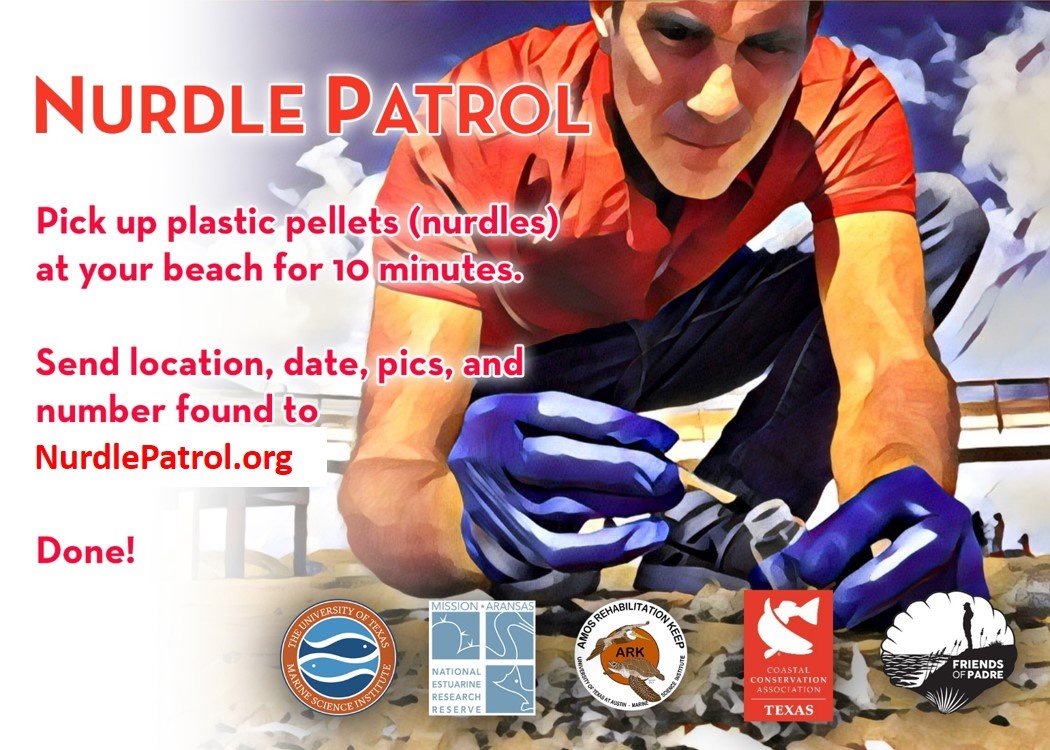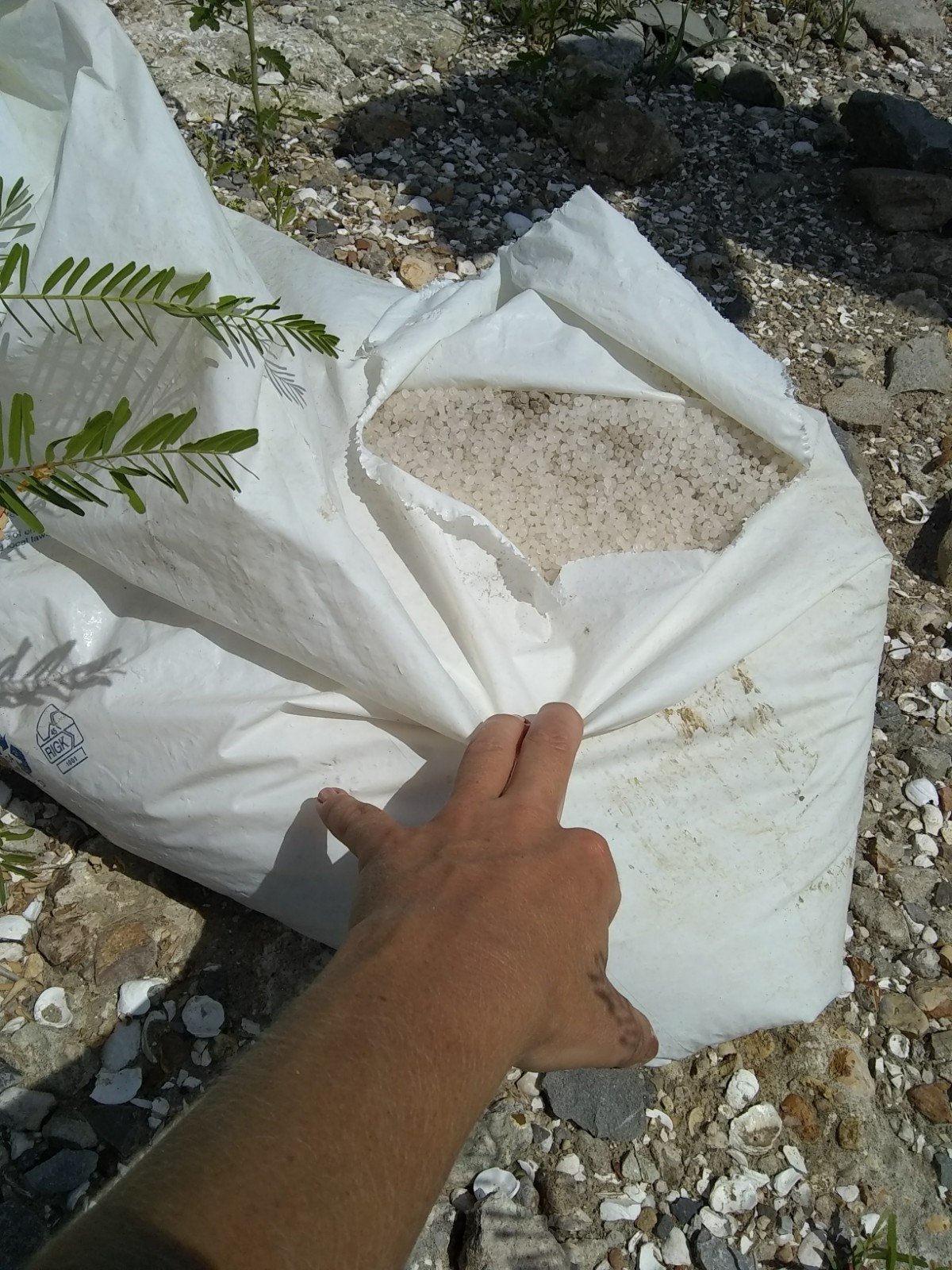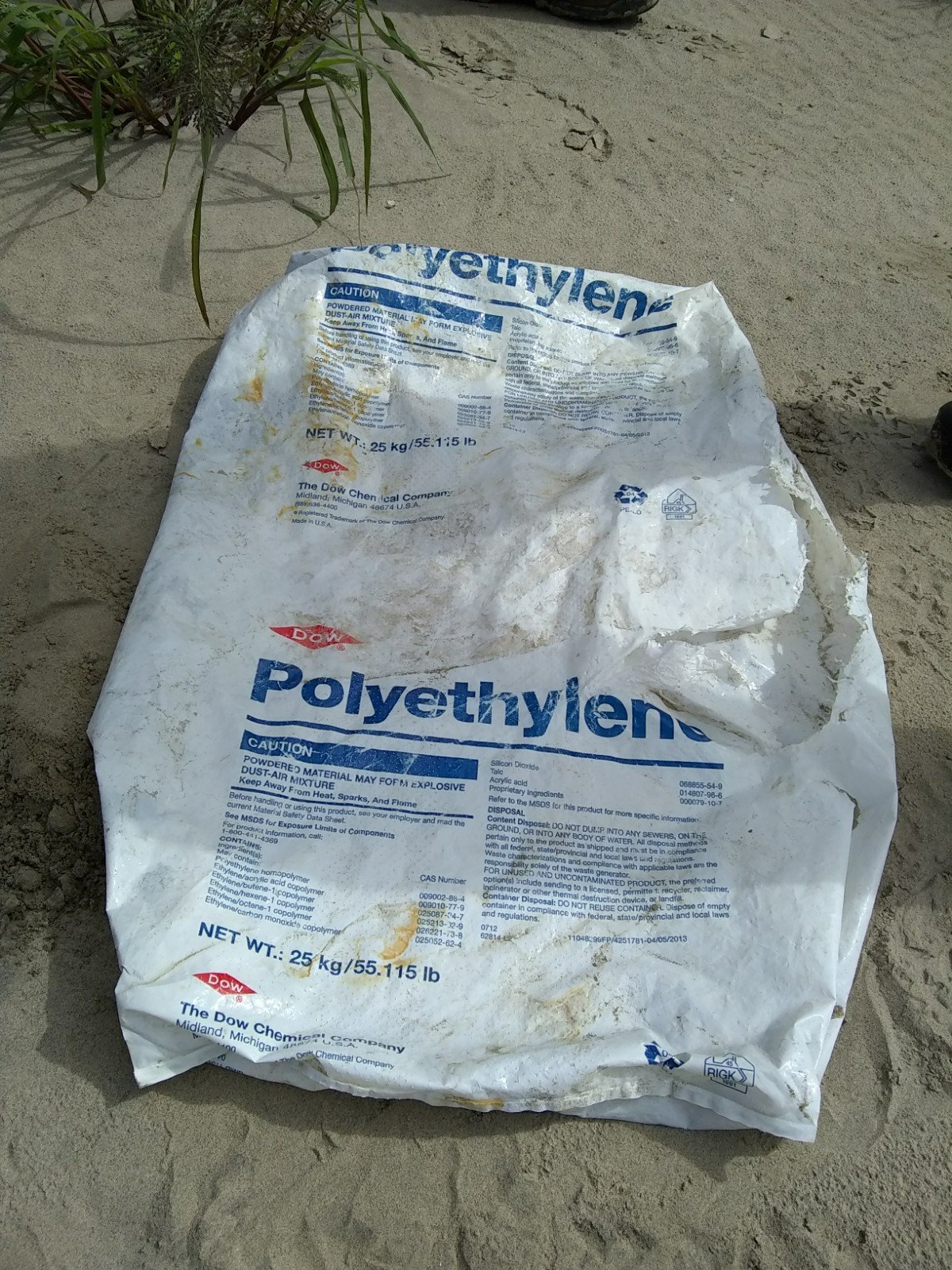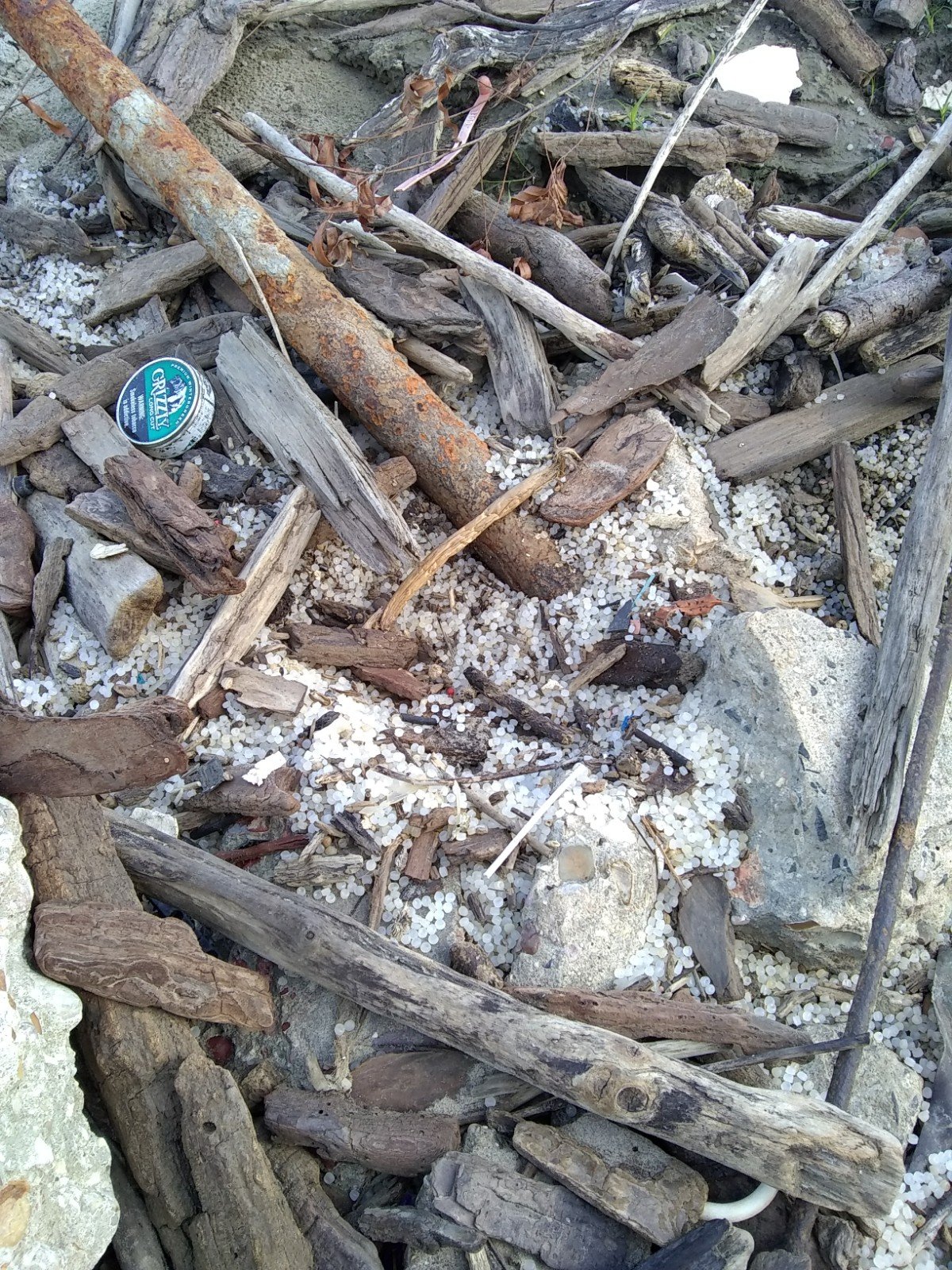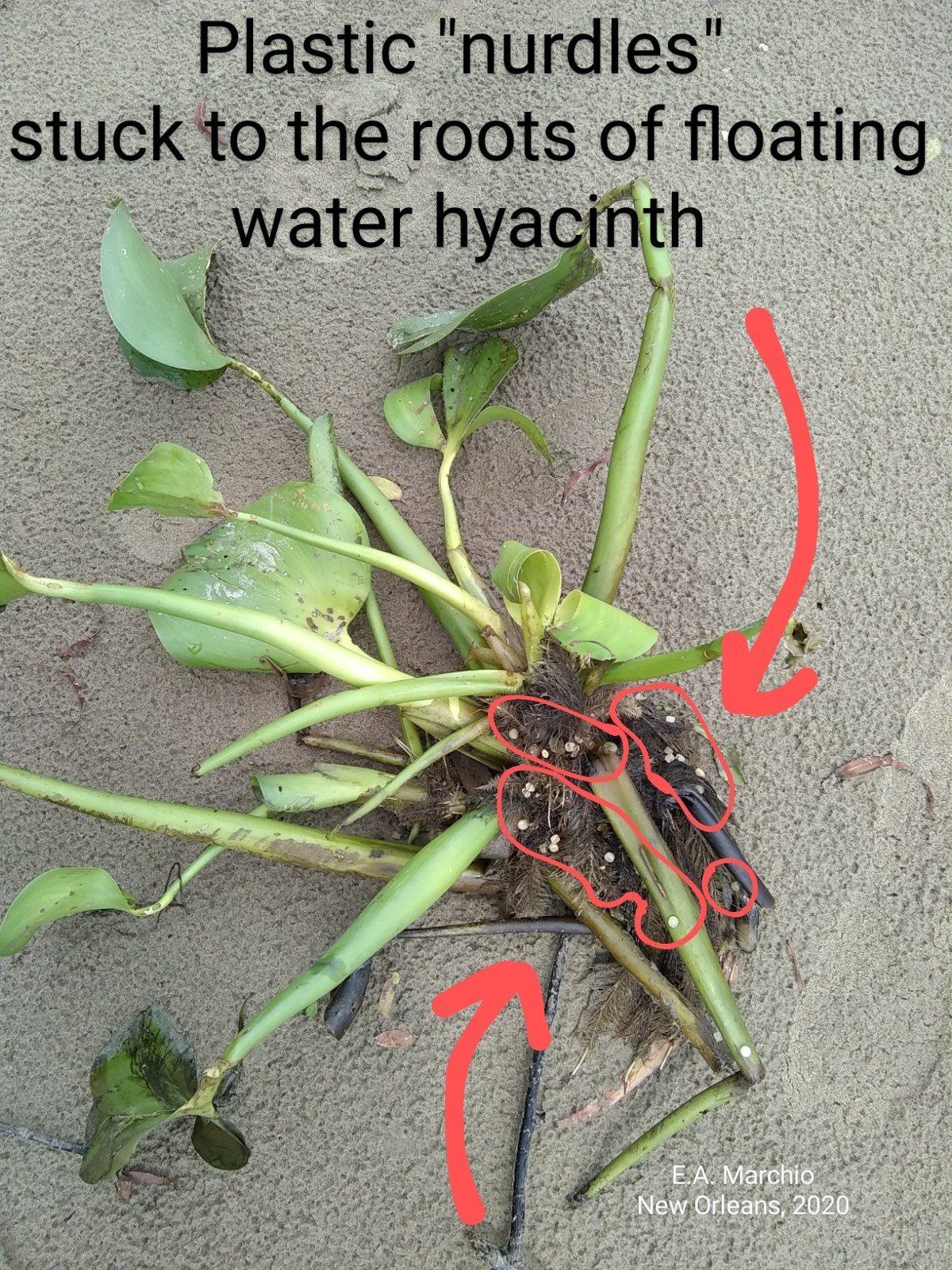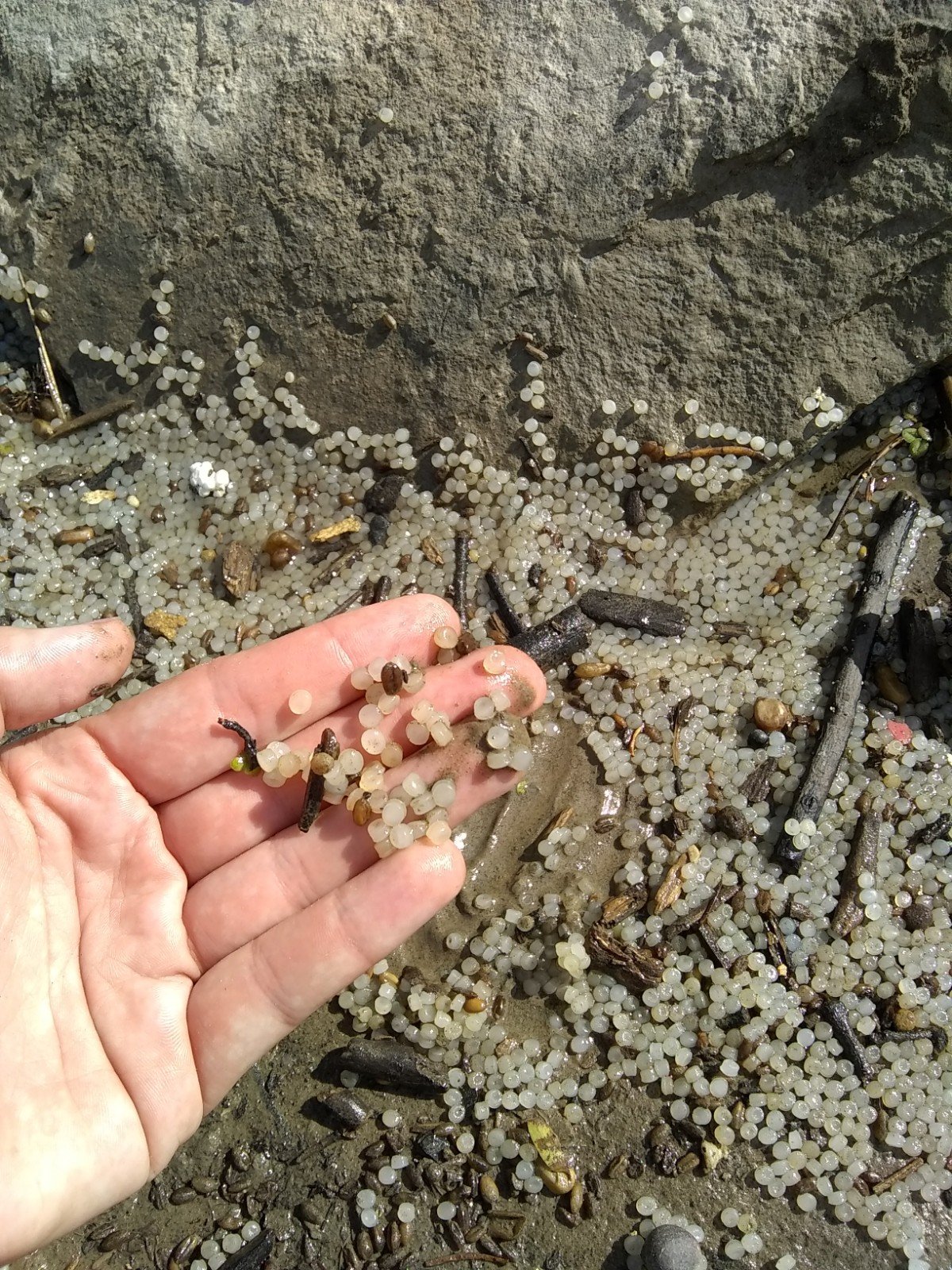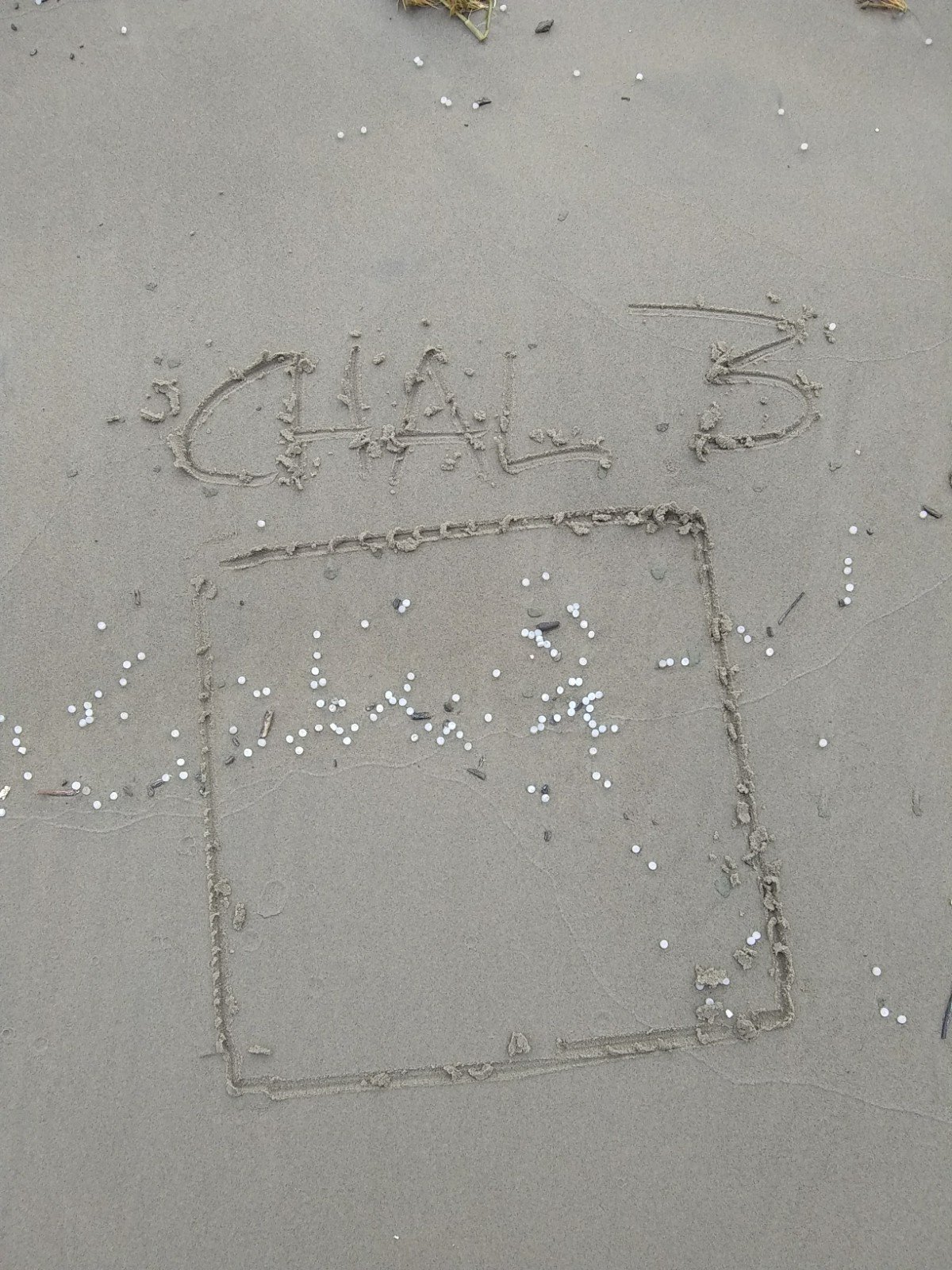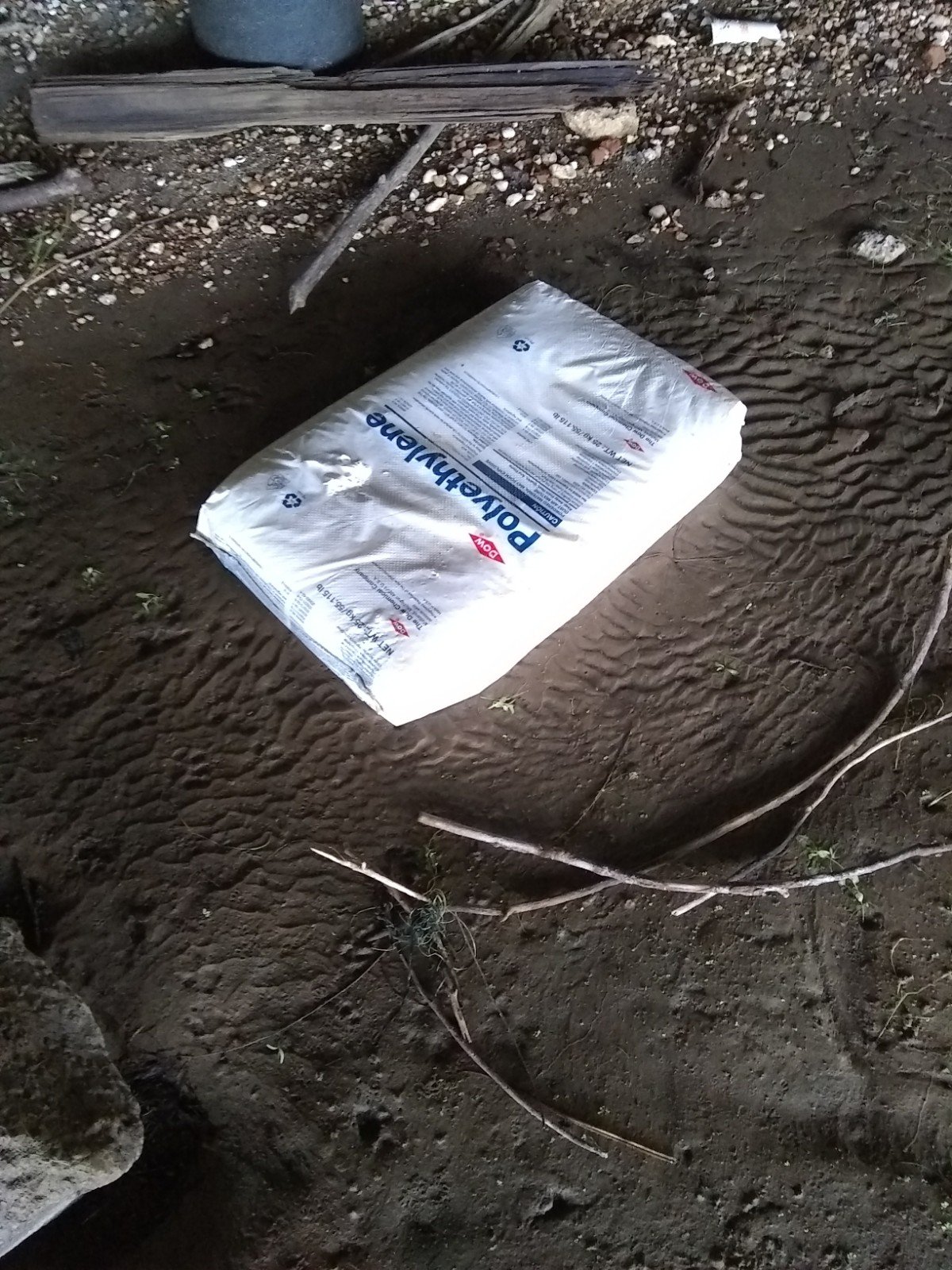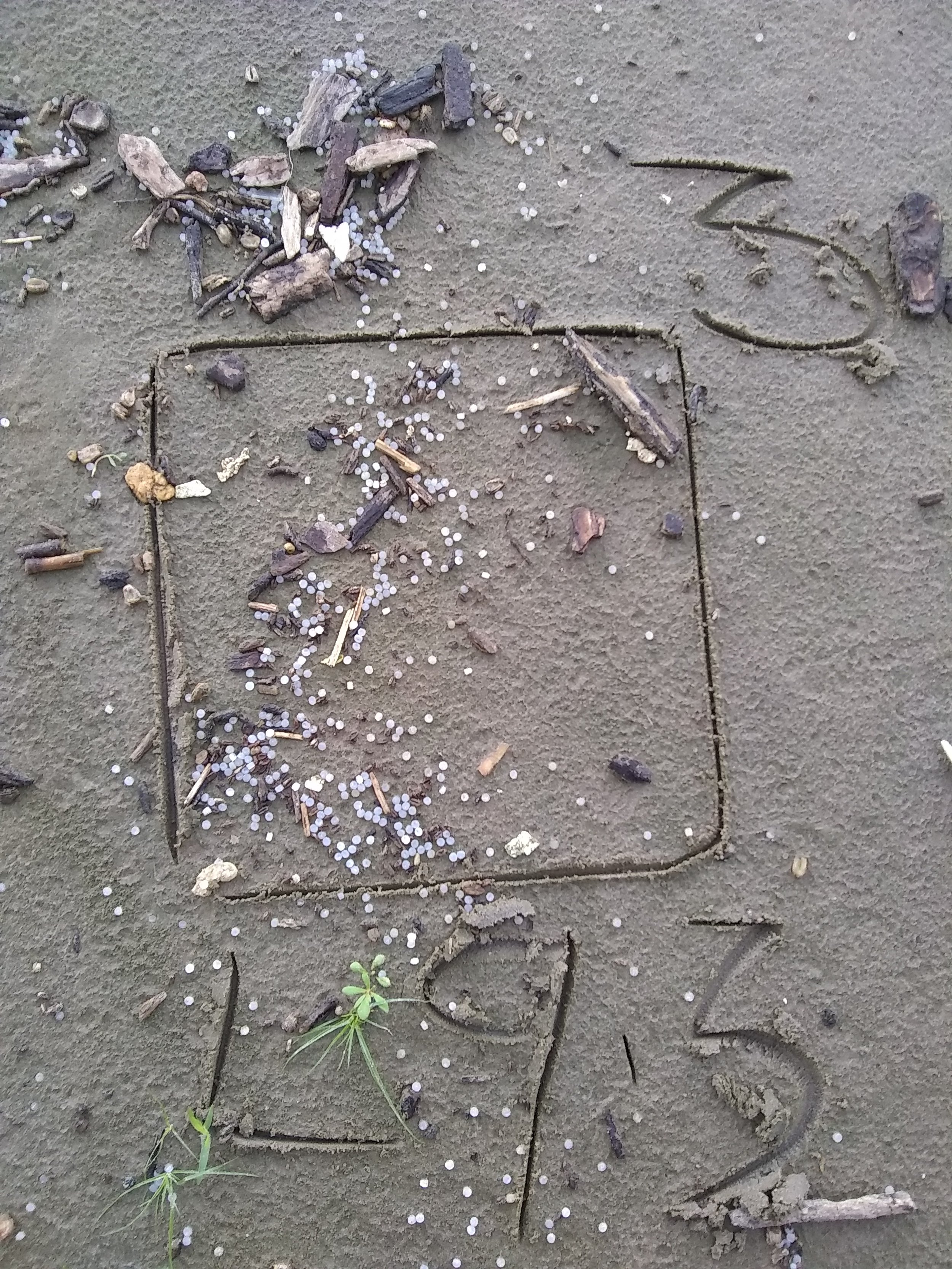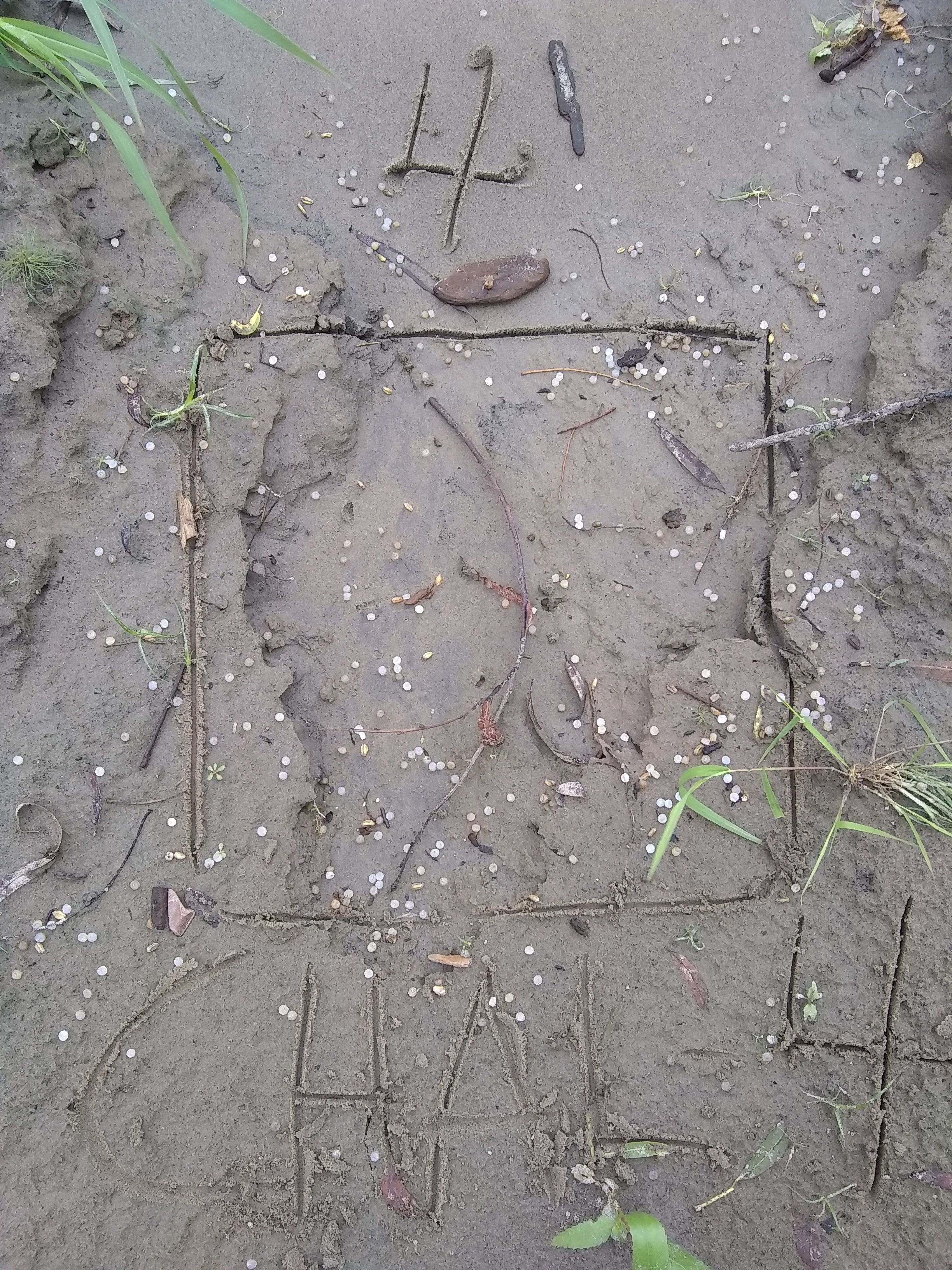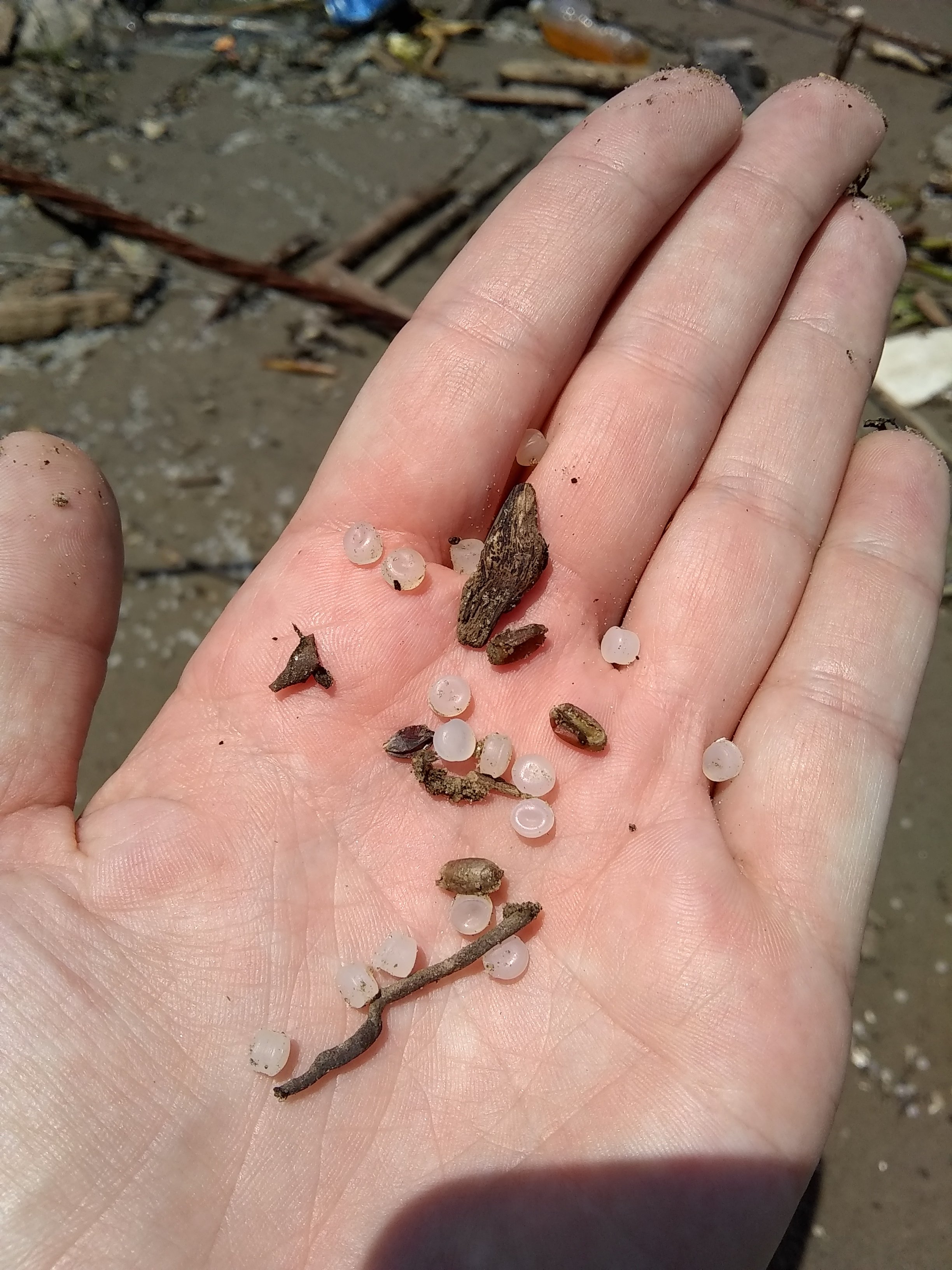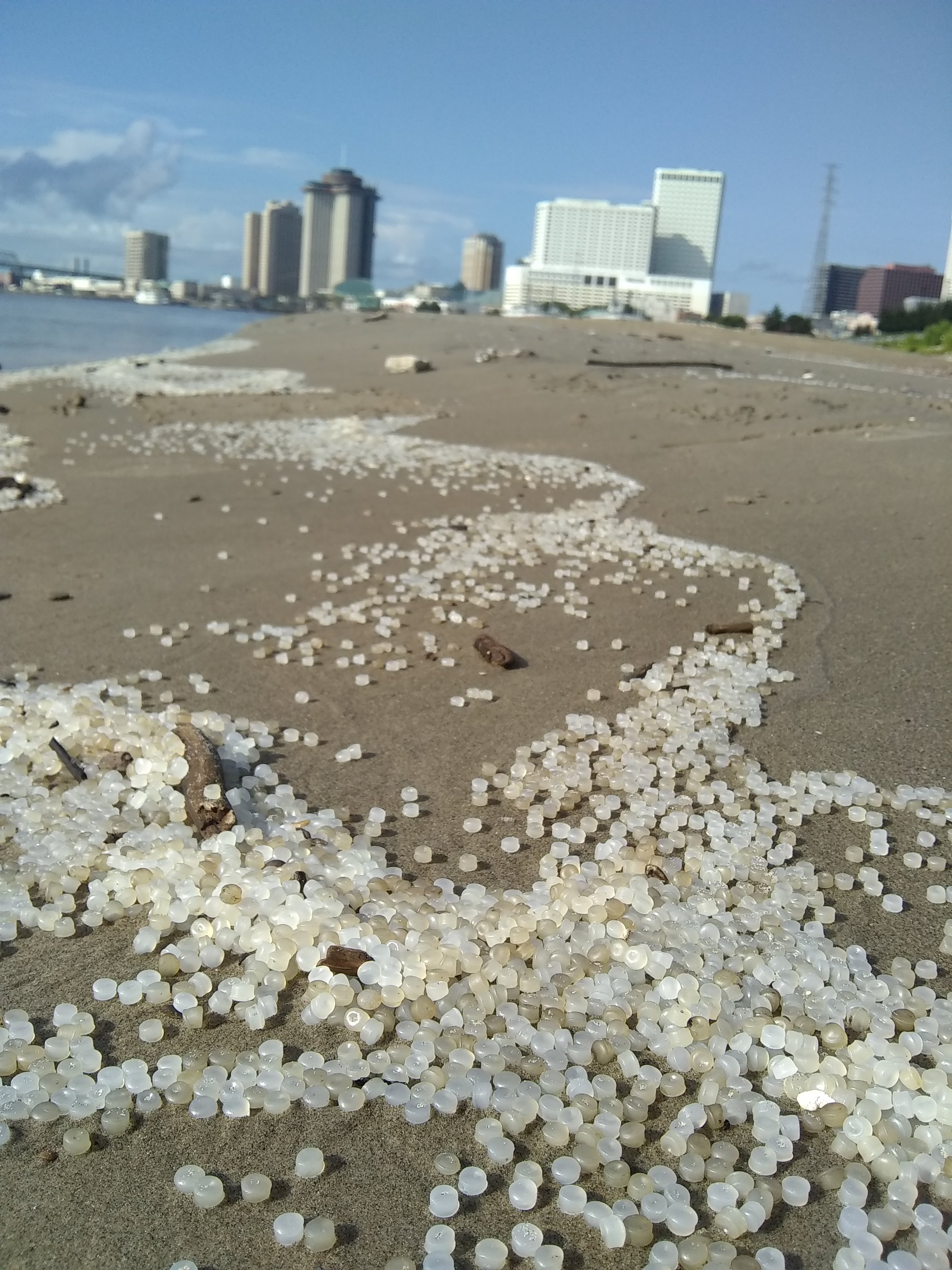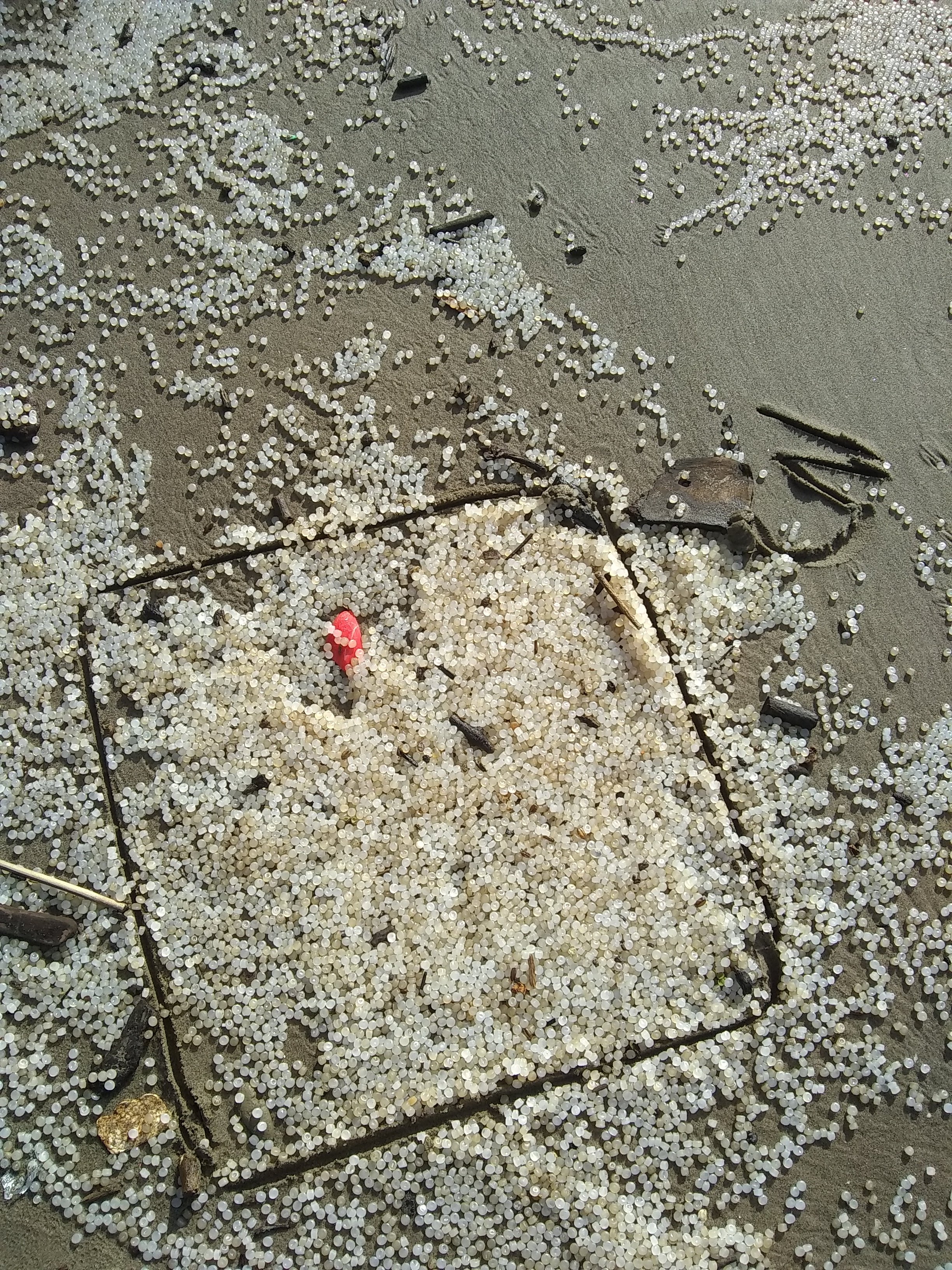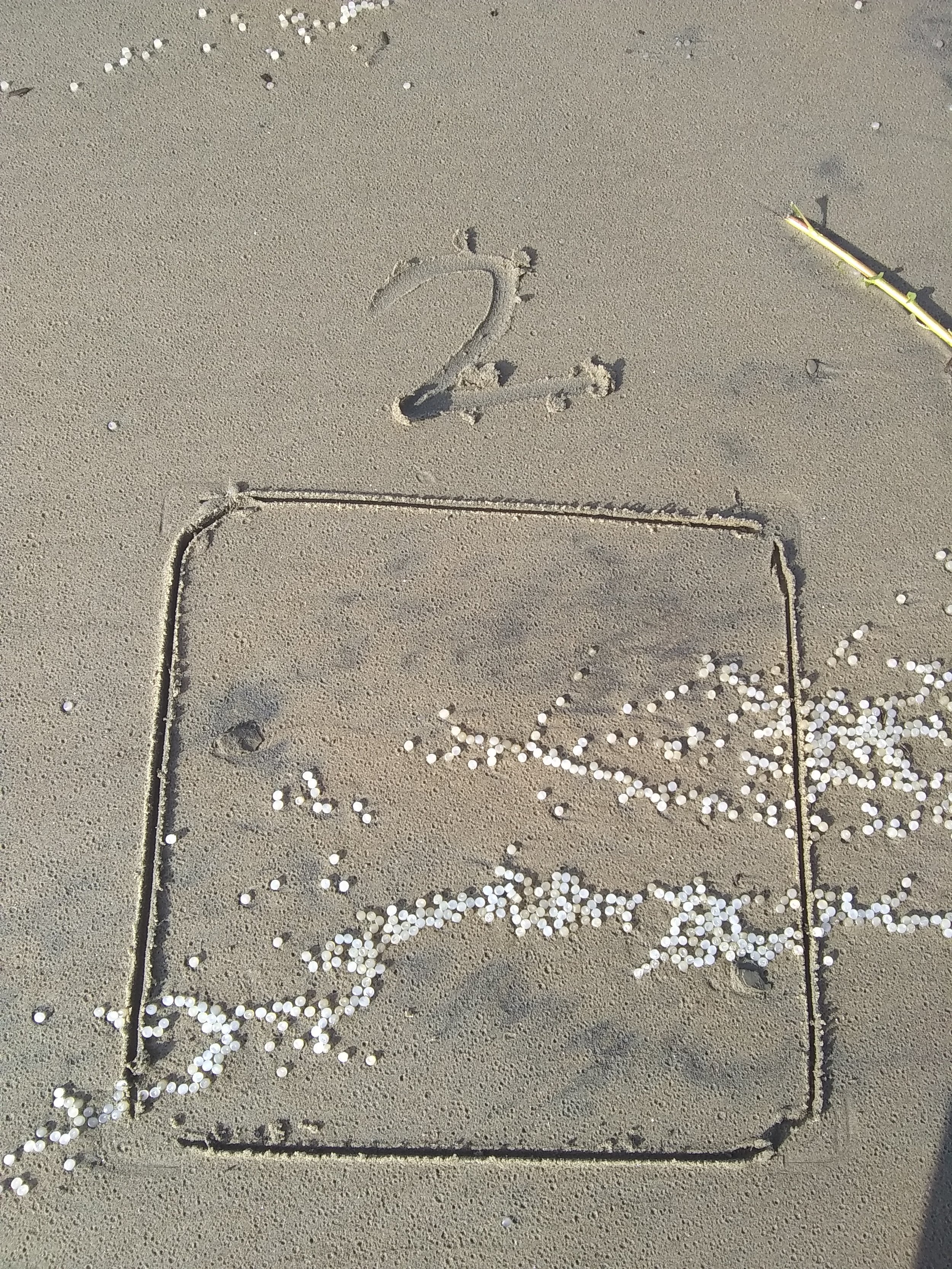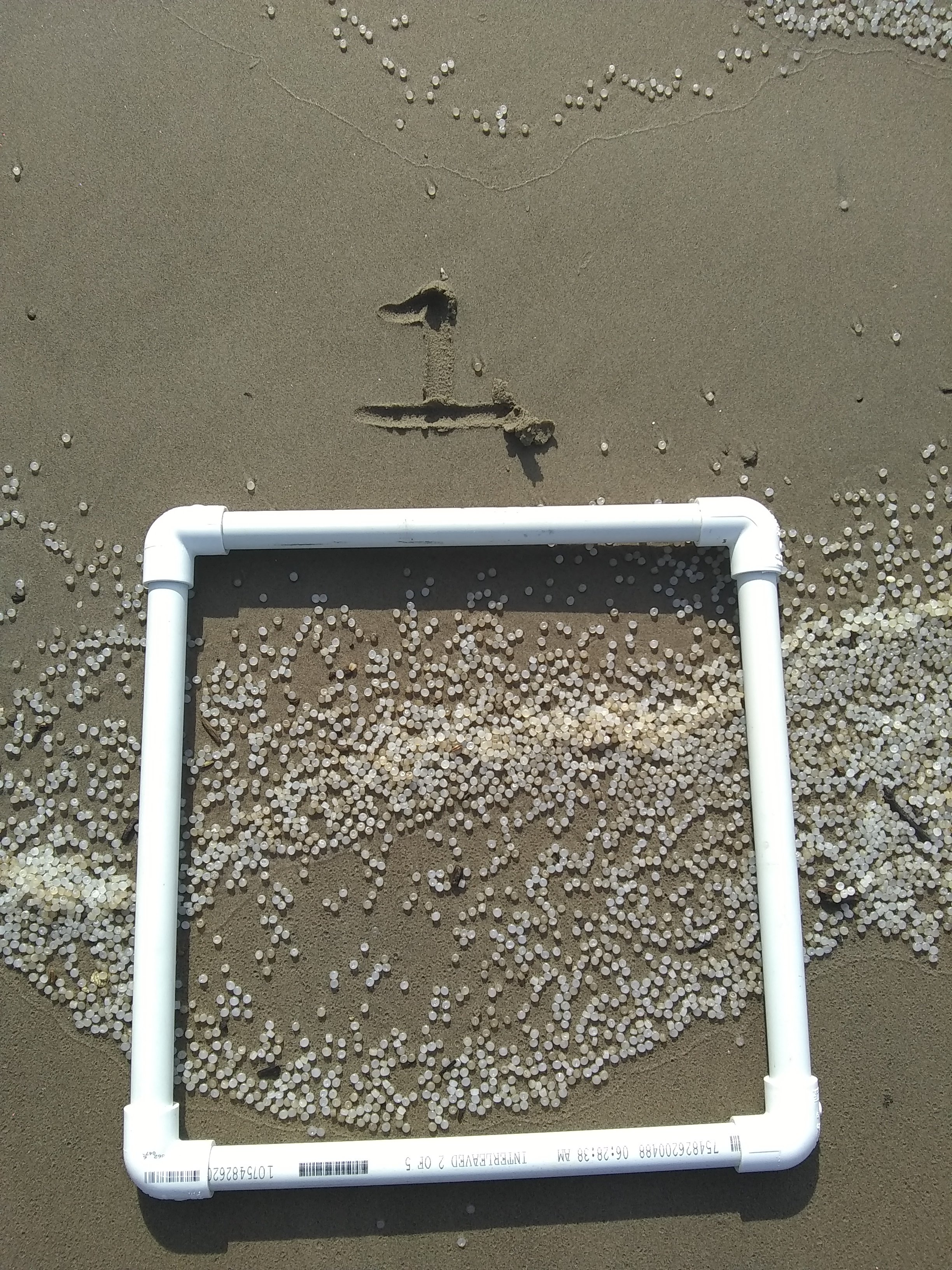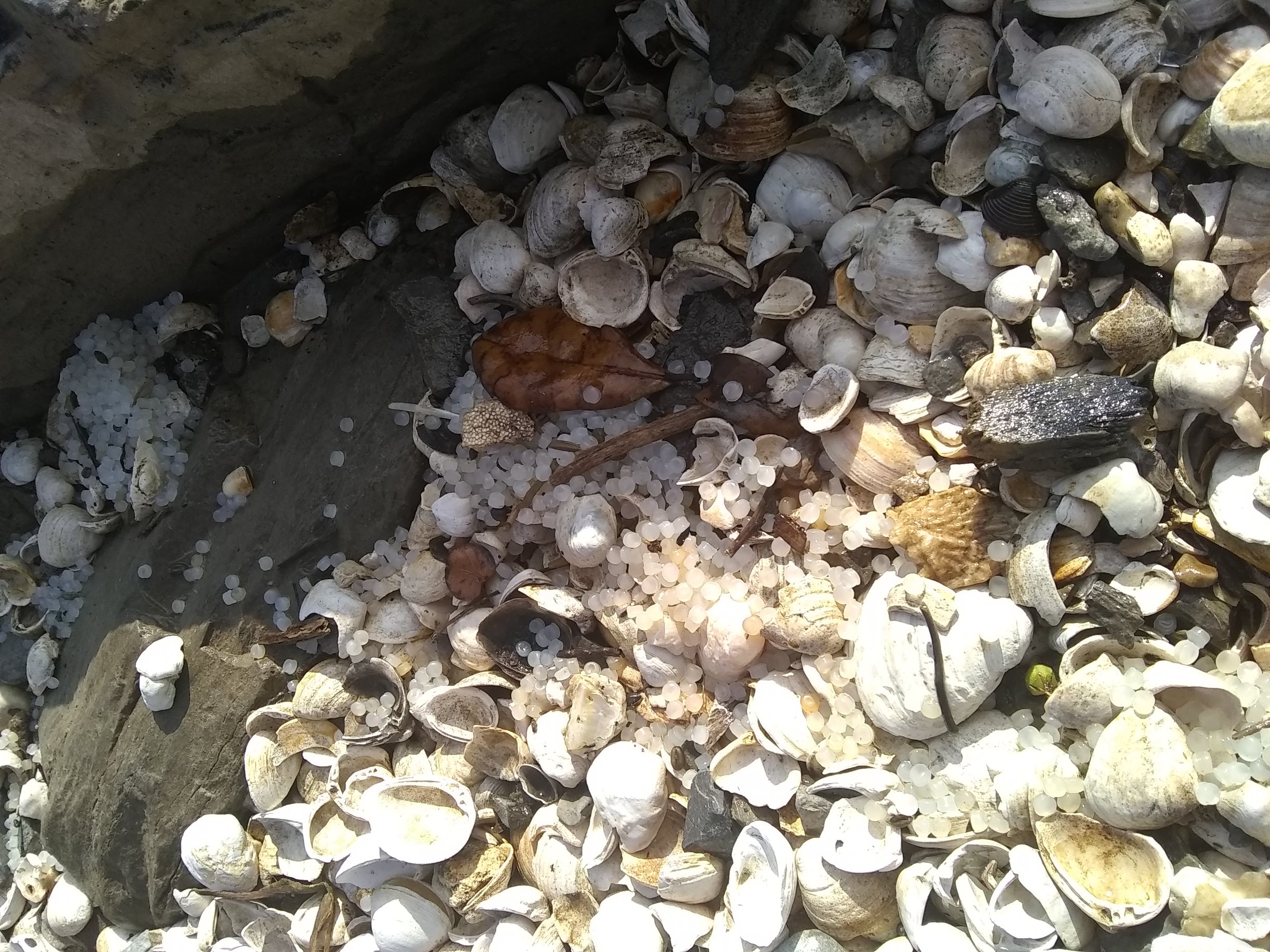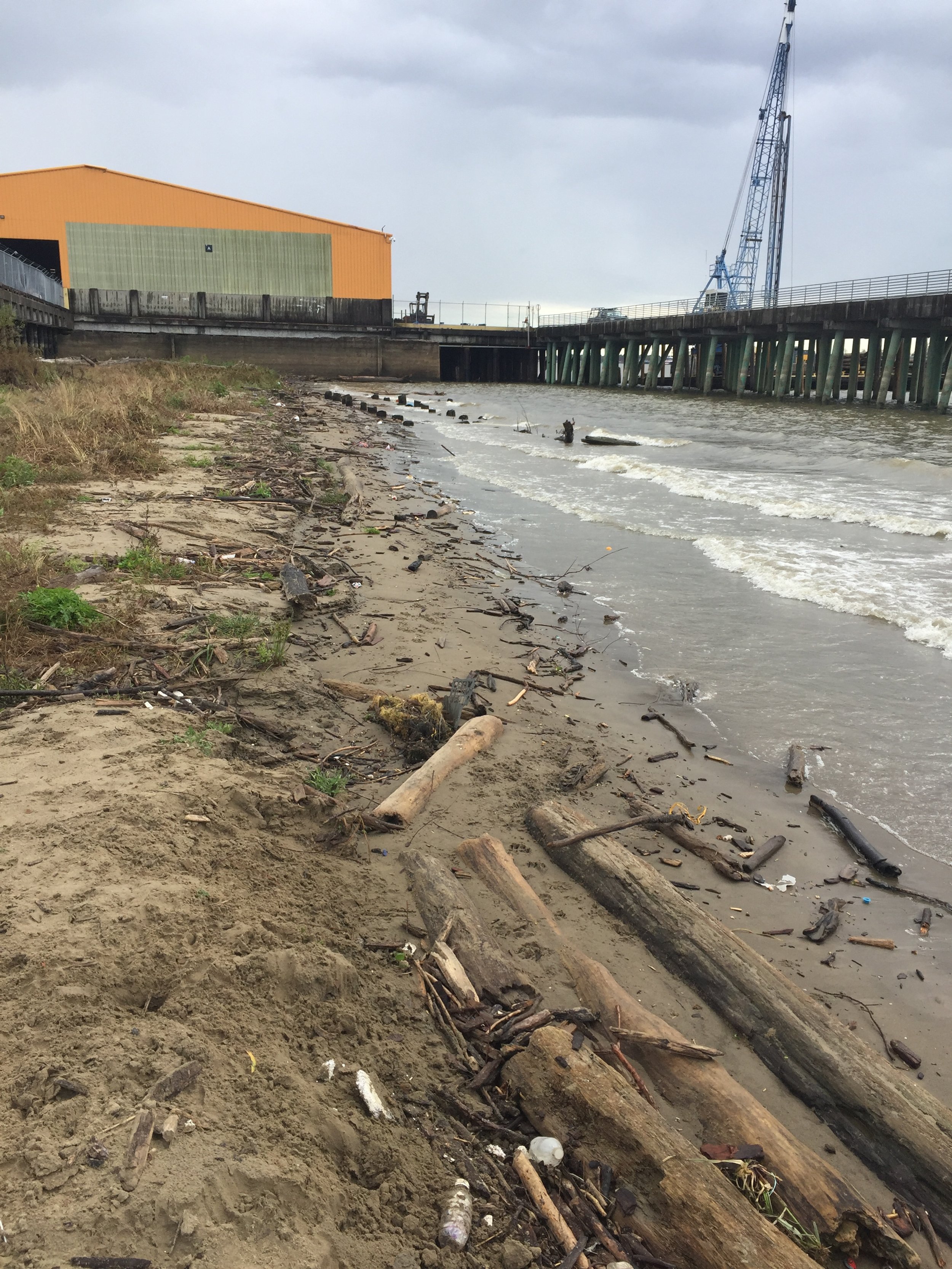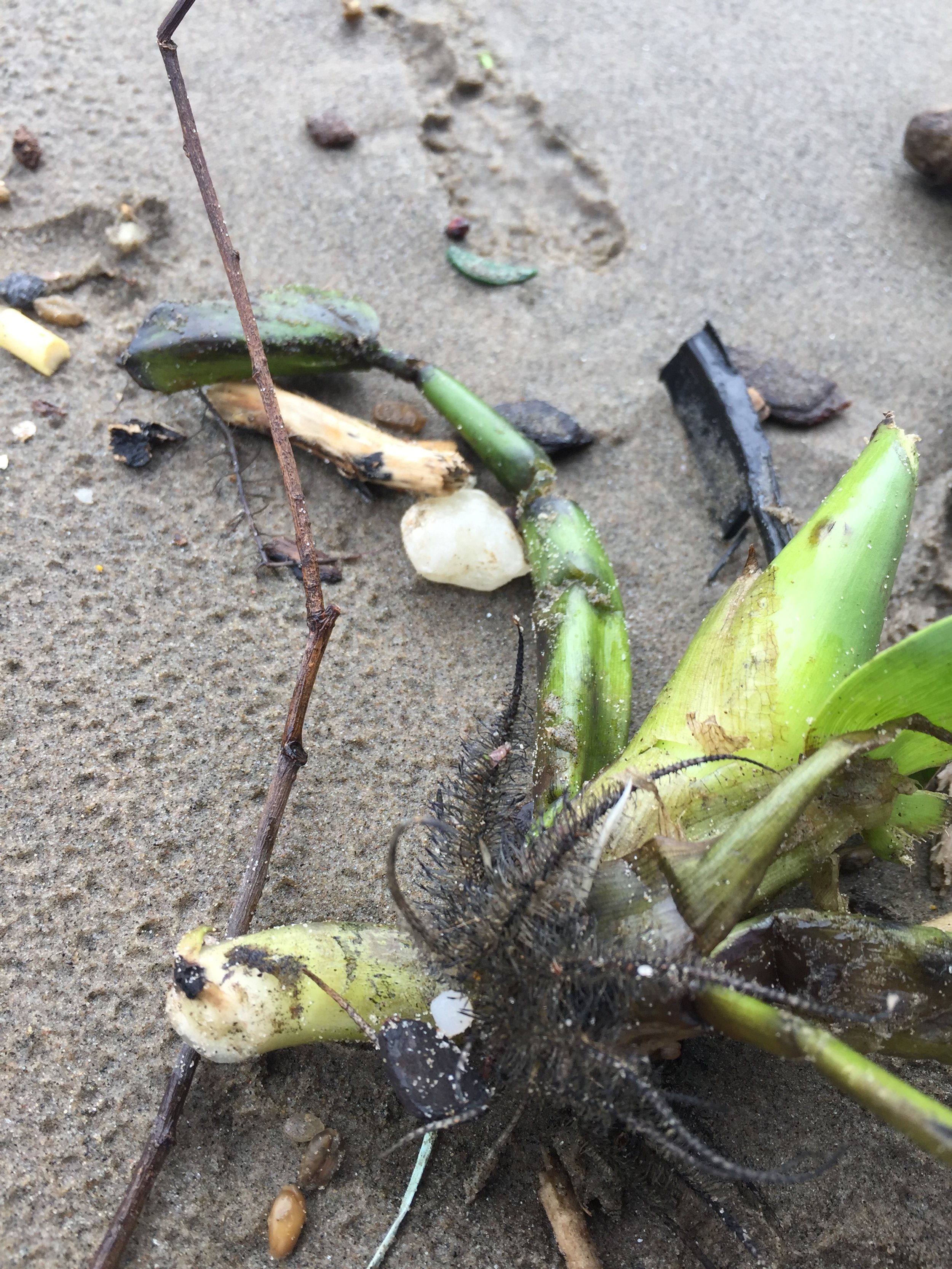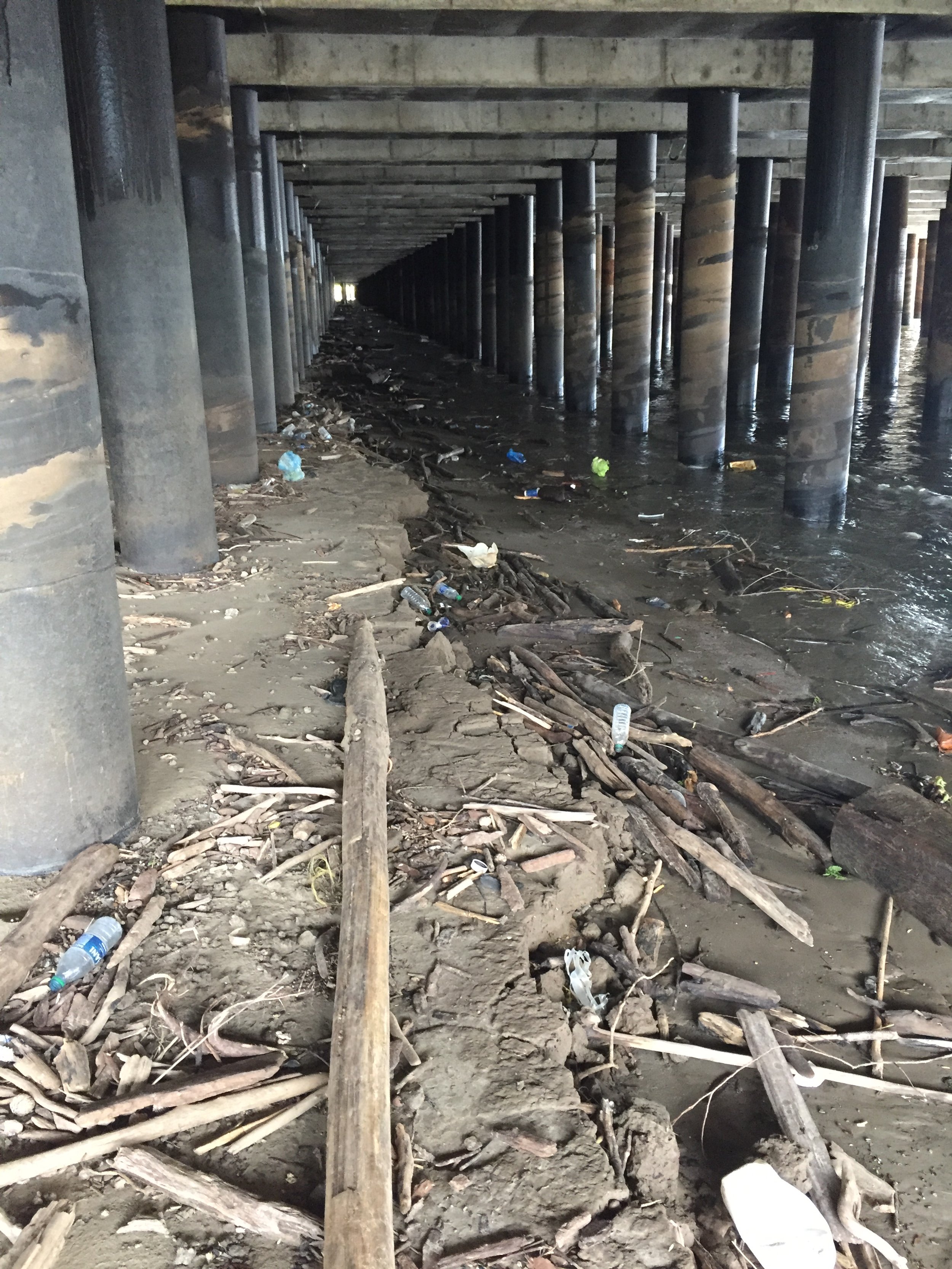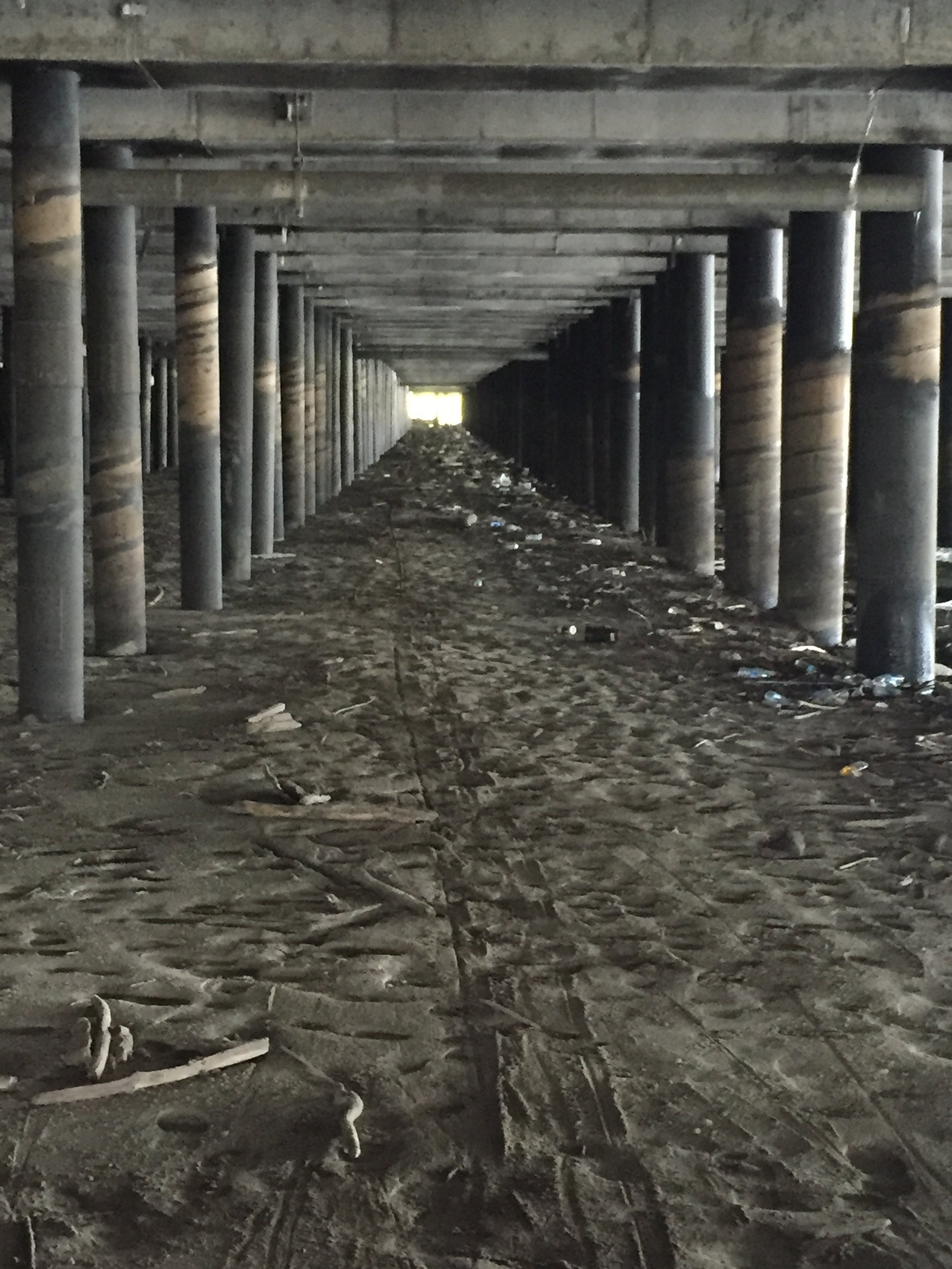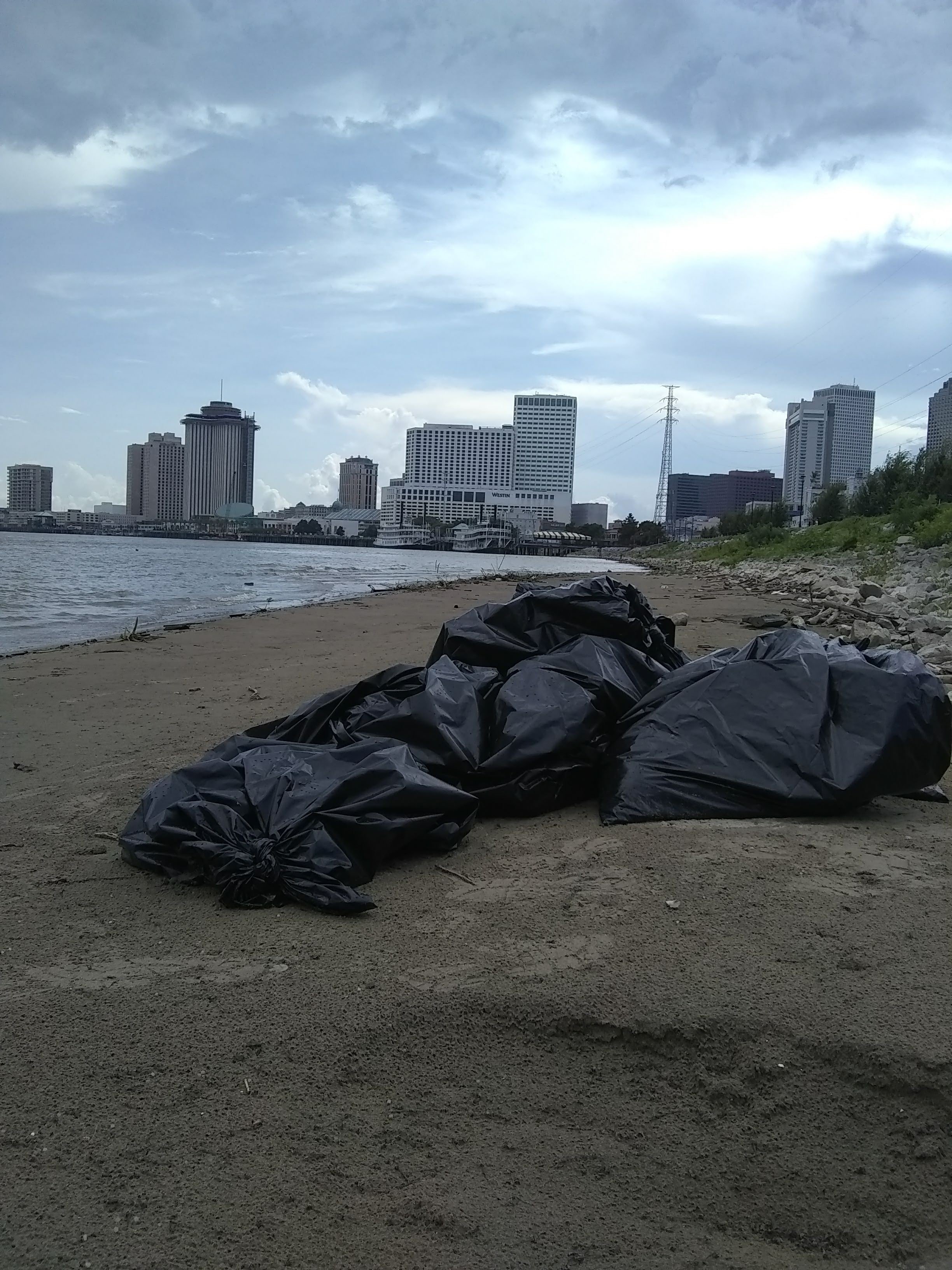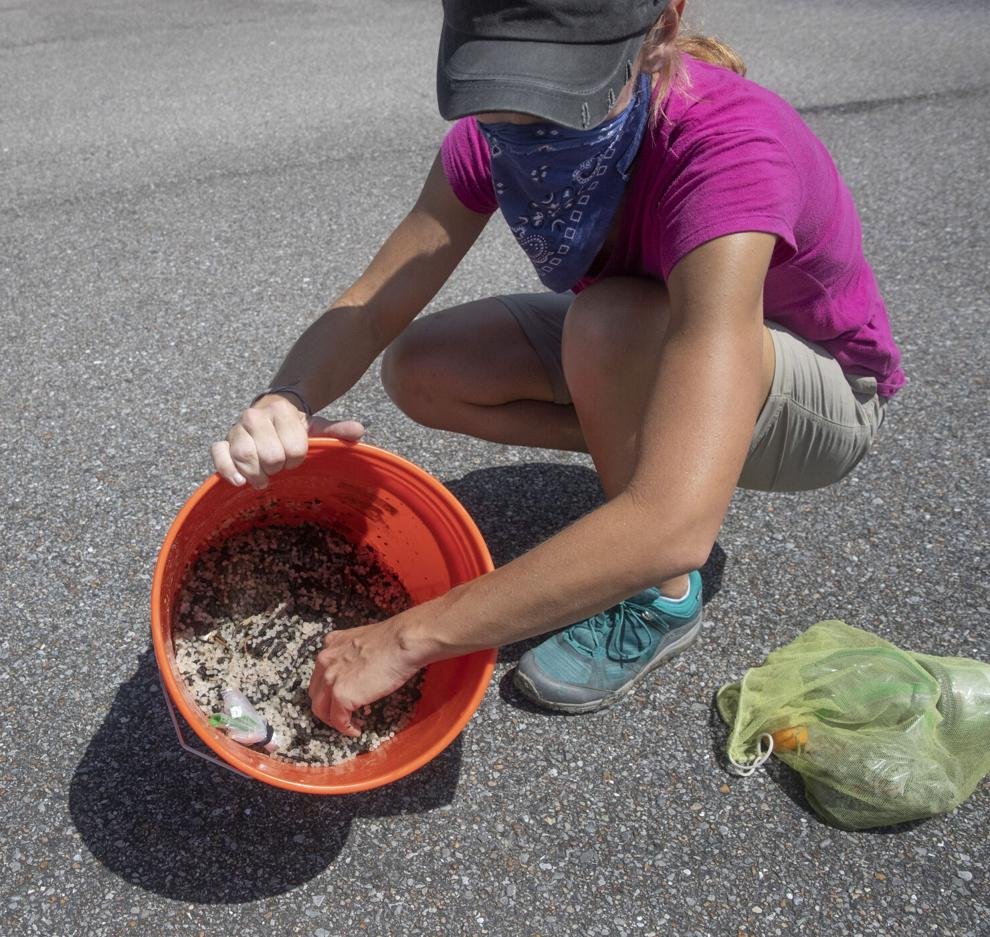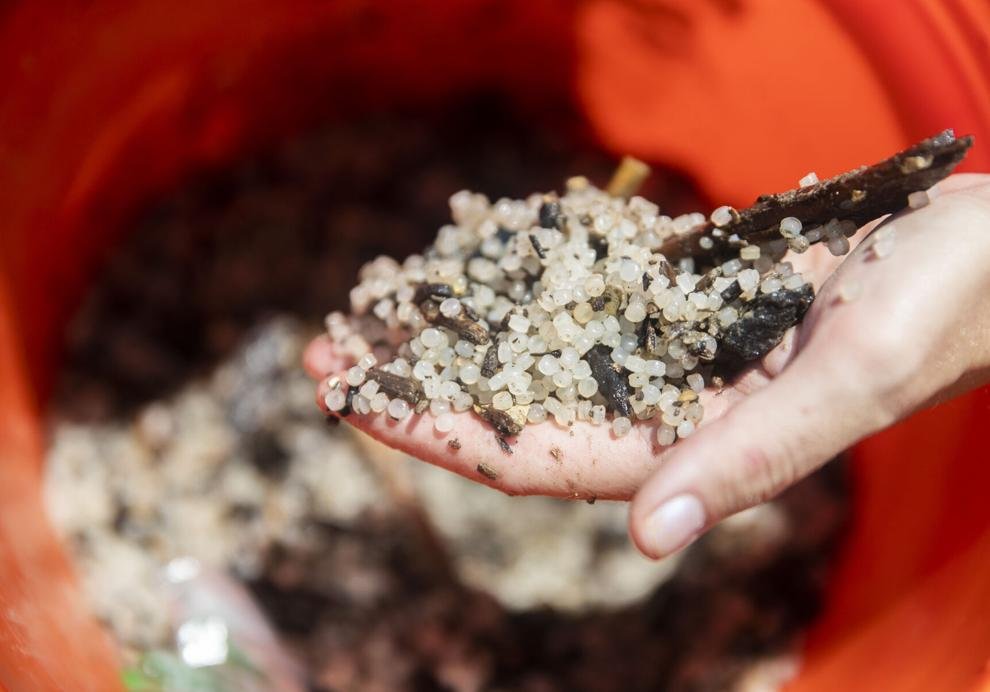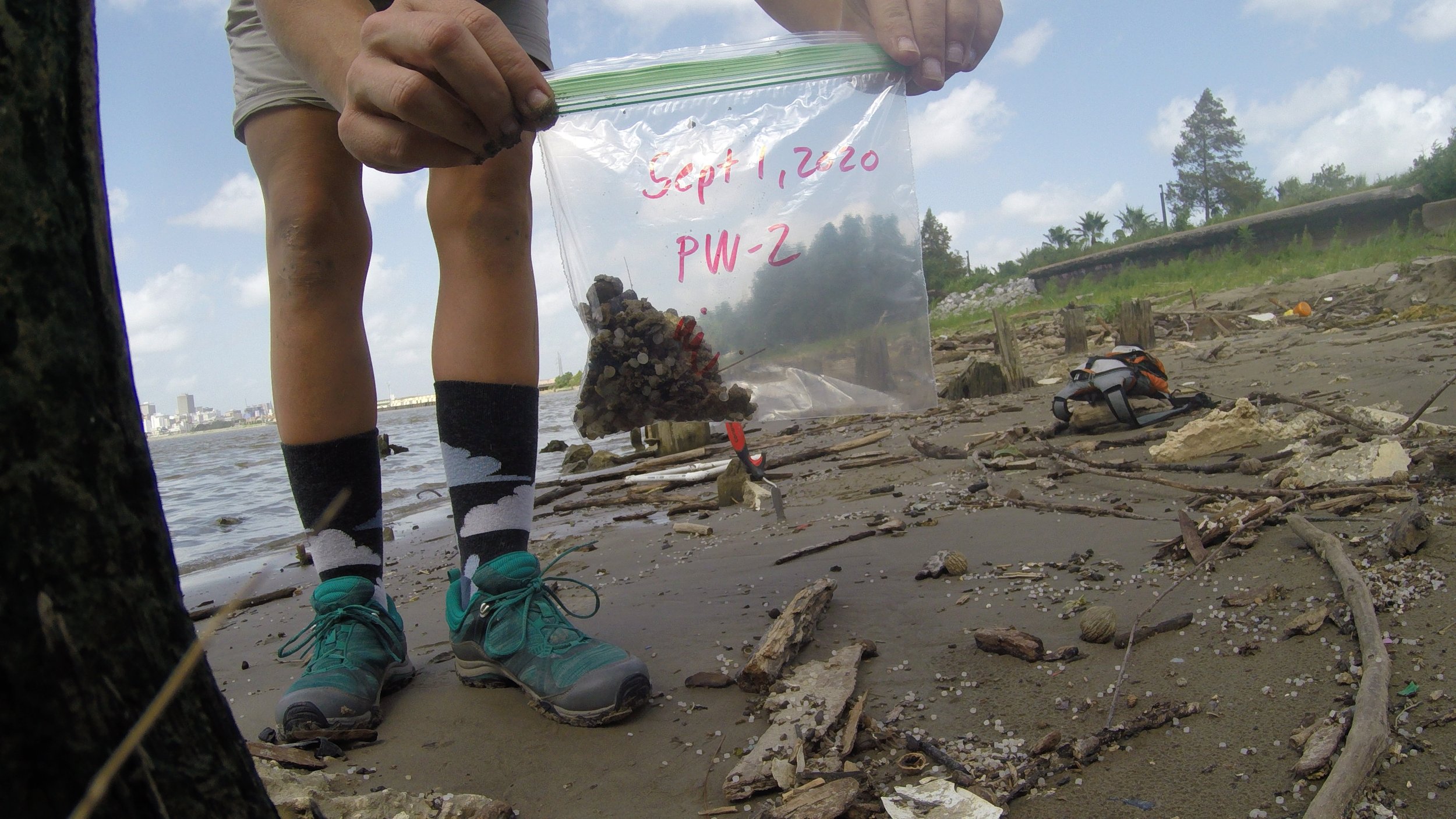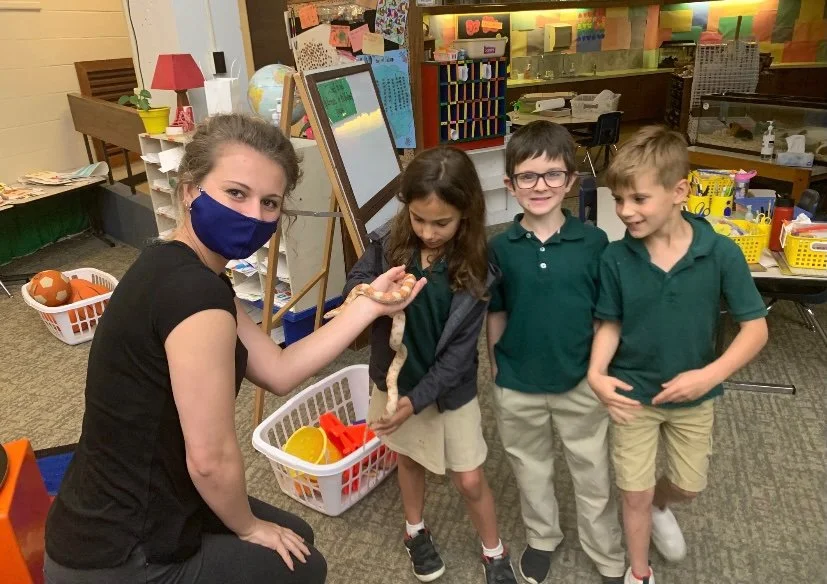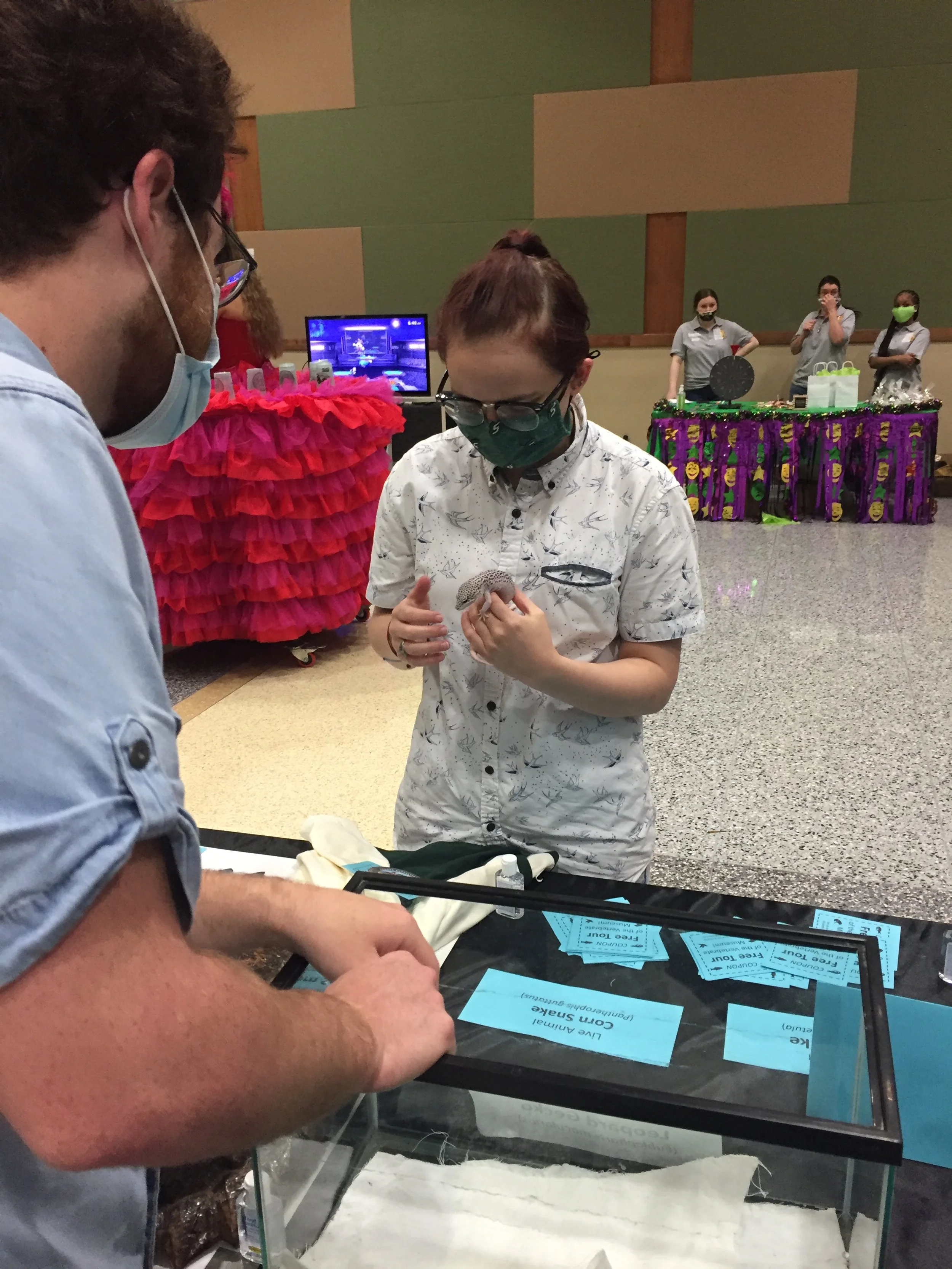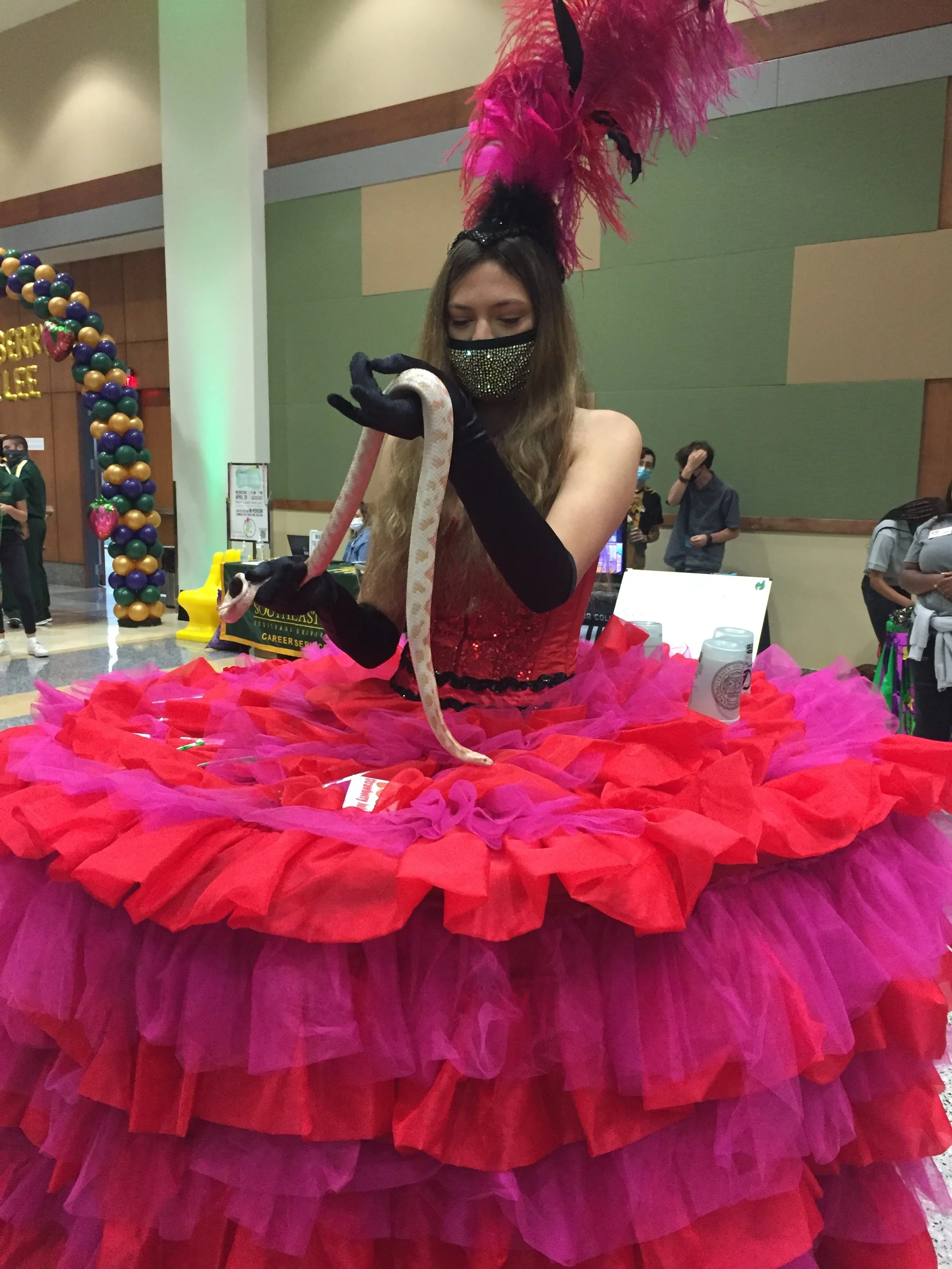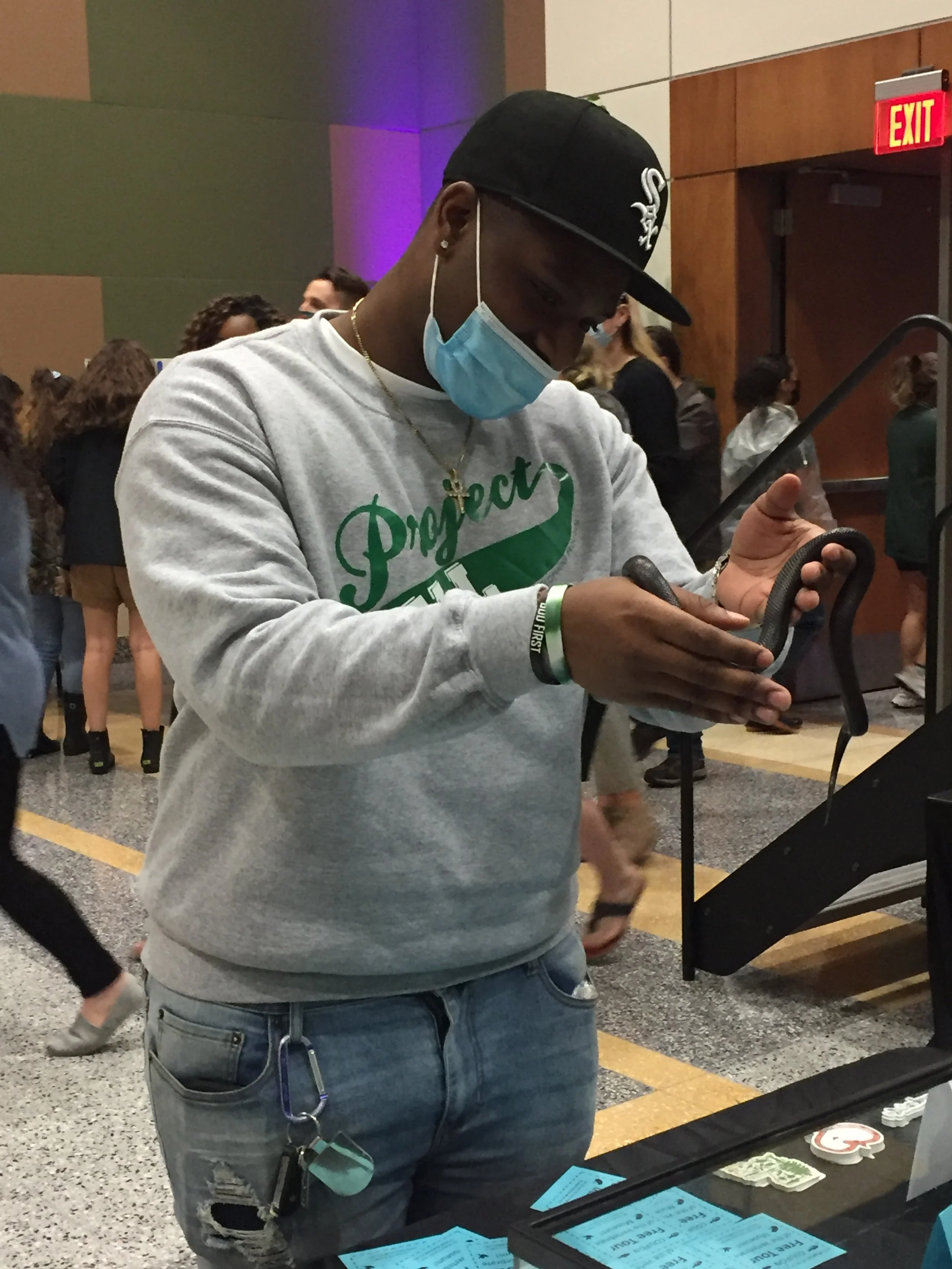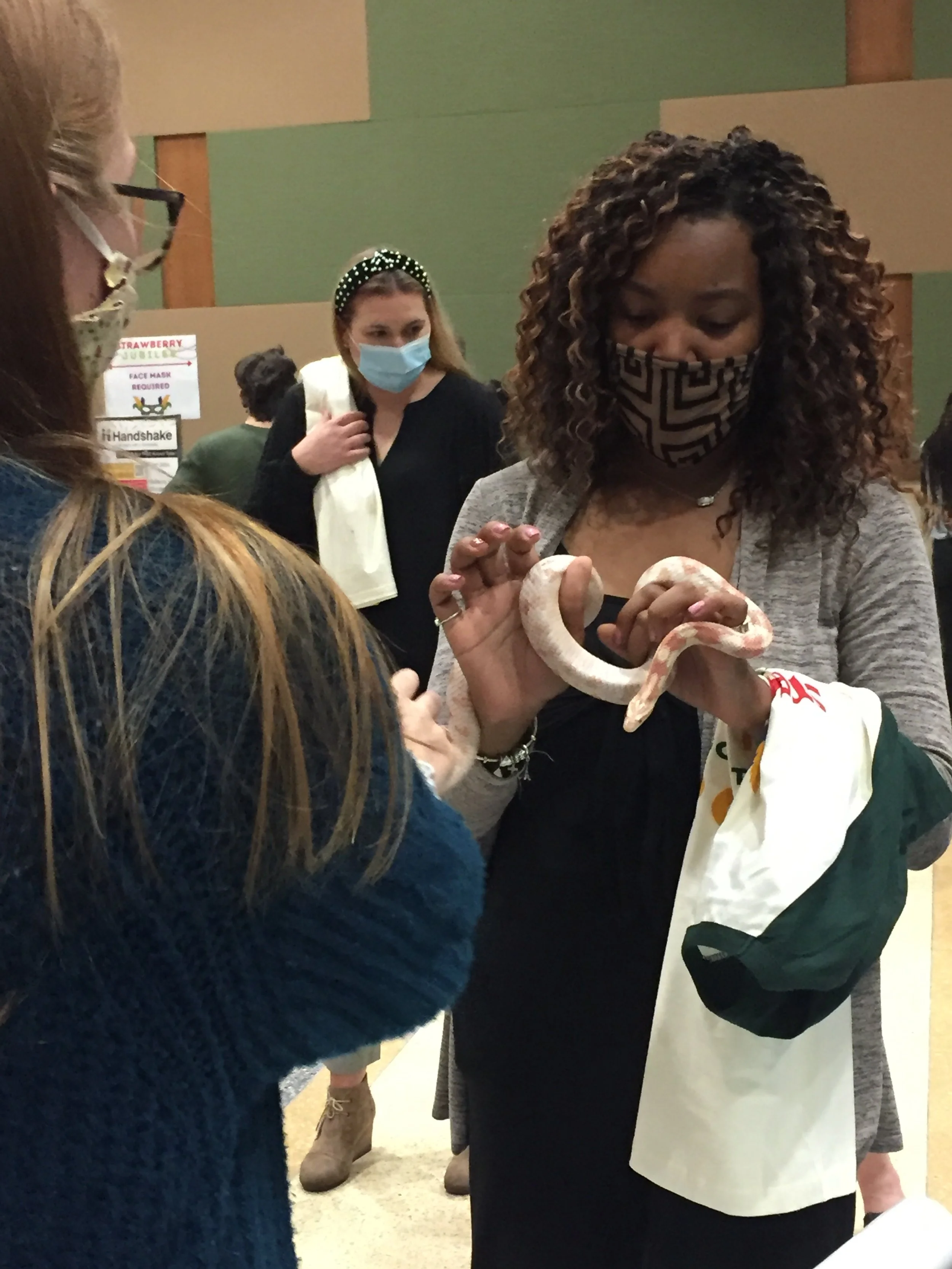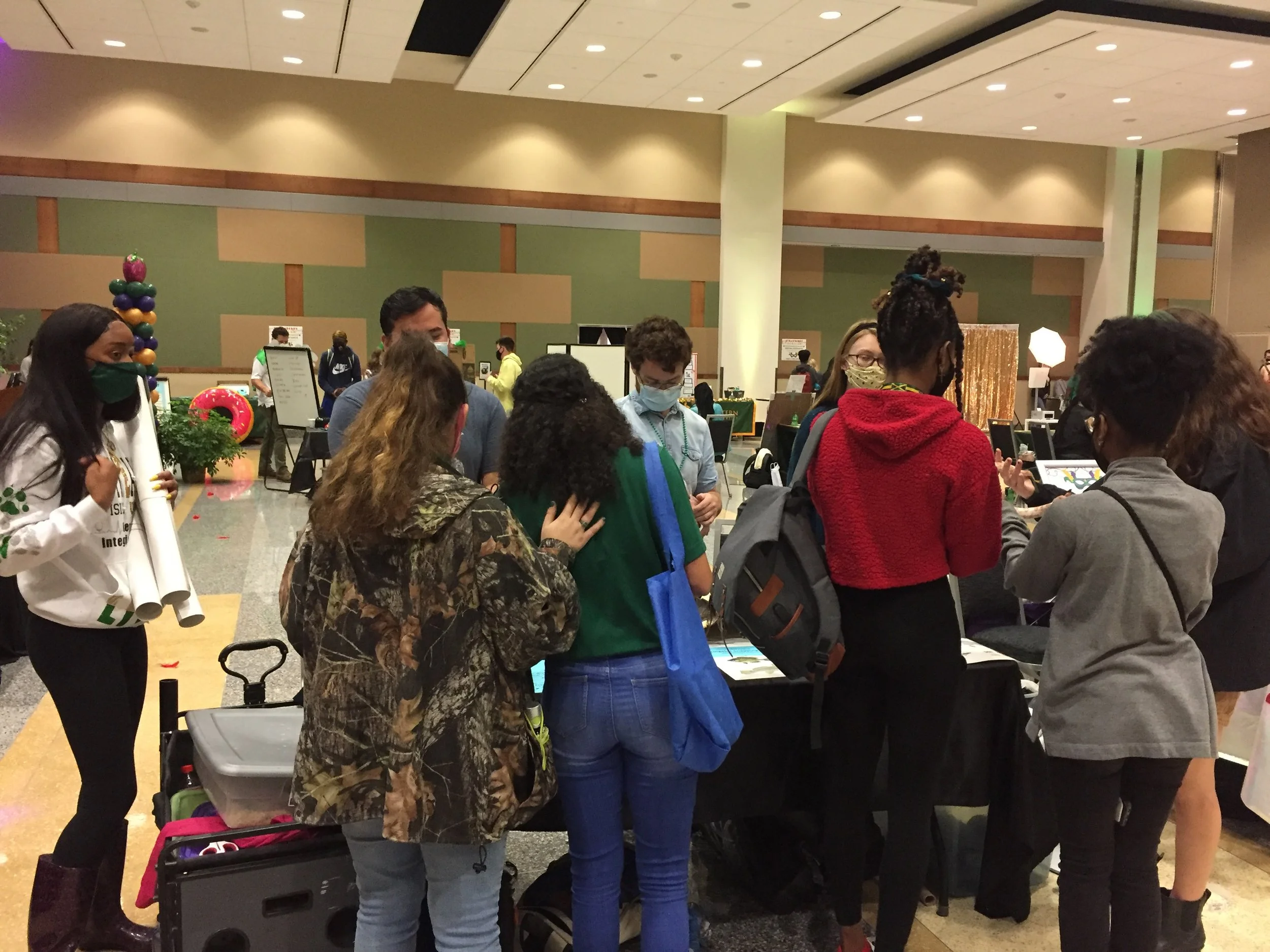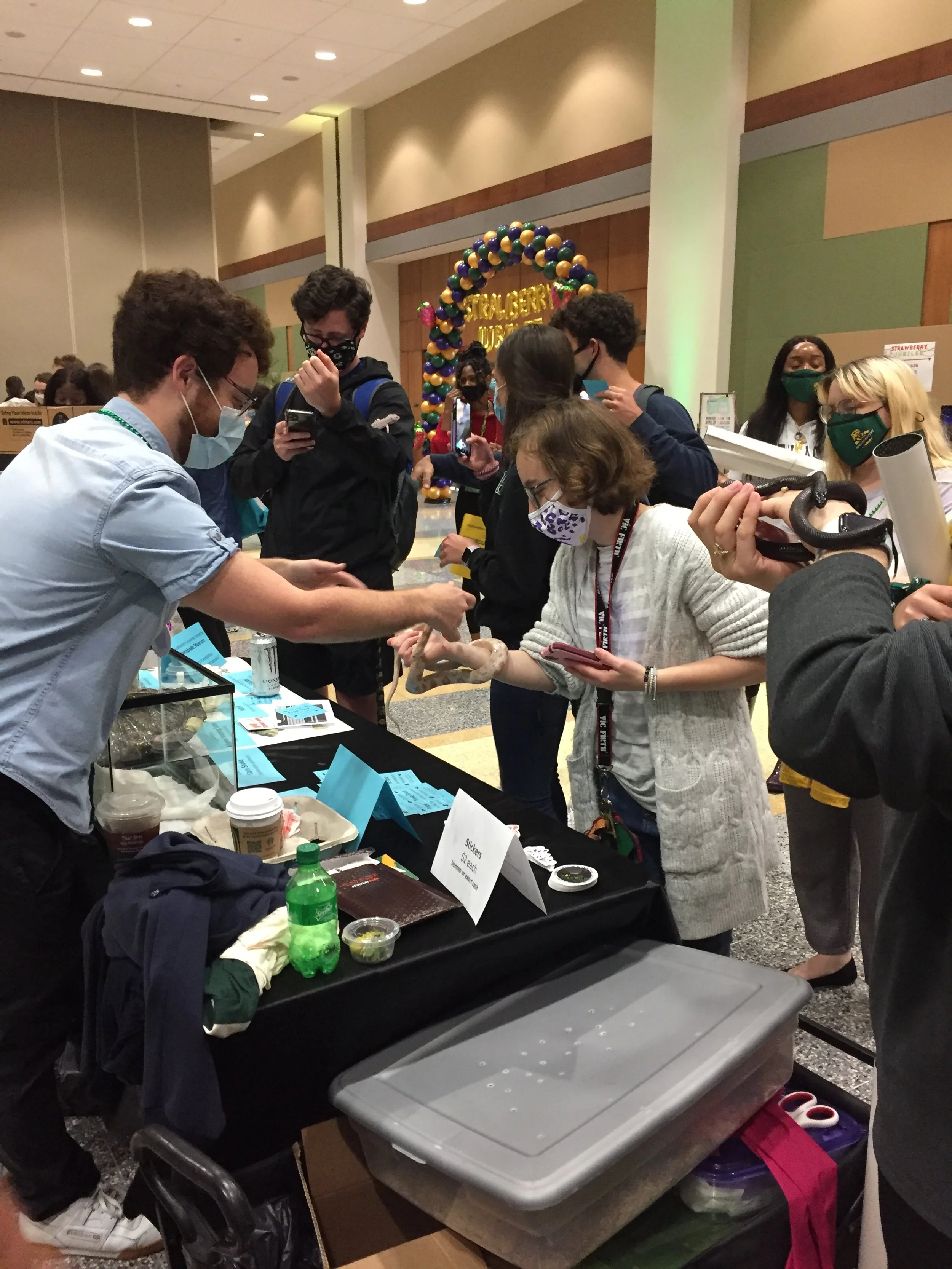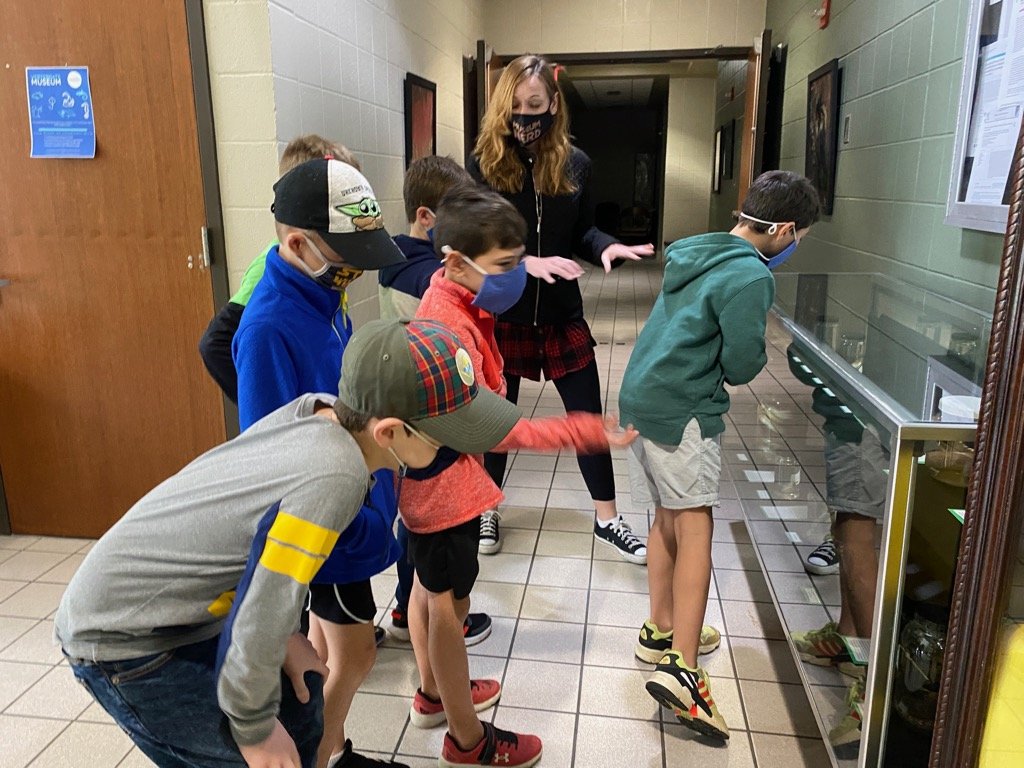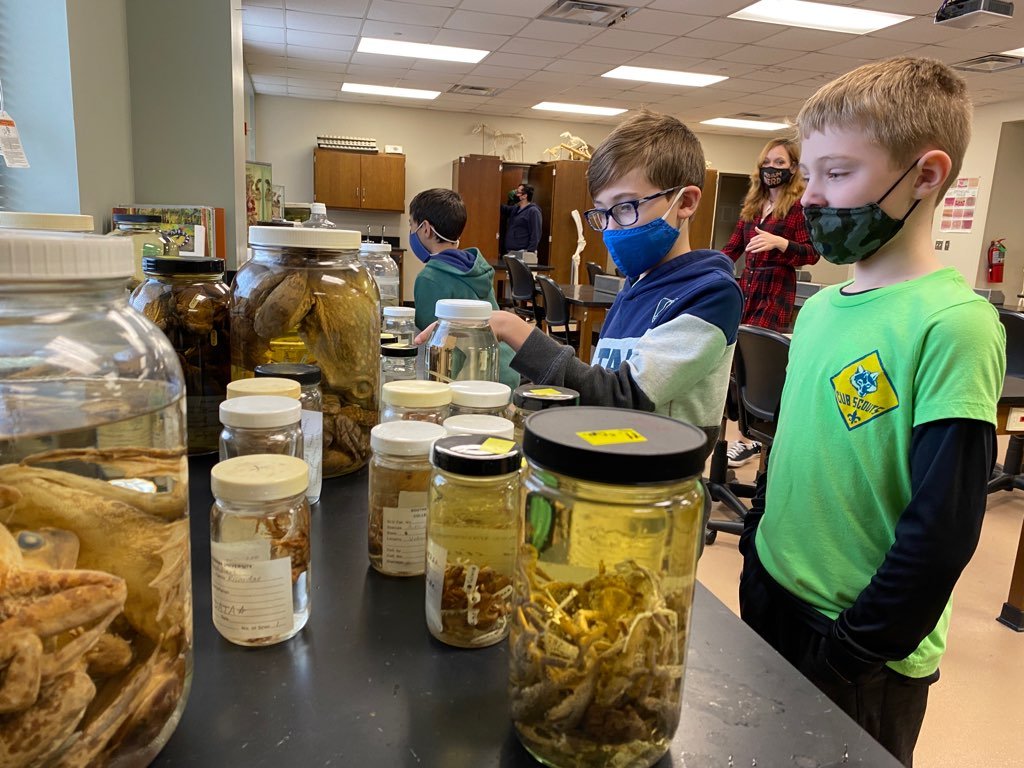MEDIA
“Citizen action to stem microplastic pollution”
Click the photo or link below to read my story published through Monash University, in Melbourne Australia, for 360info.org; published June 8, 2022
https://360info.org/citizen-action-to-stem-microplastic-pollution/
“The massive, unregulated source of plastic pollution you’ve probably never heard of”
Click the photo or link below to read the story at Vox.com, published May 6, 2022
https://www.vox.com/recode/23056251/nurdles-plastic-pollution-ocean-microplastics
Collecting pre-production microplastics (also called “nurdles”) along the shoreline of the Mississippi River in the 9th Ward of New Orleans, Louisiana. Click the photo to be directed to the Vox article written by Neel Dhanesha. Photo also by Neel. Taken April 5, 2022. All nurdles collected have been curated in the Environmental Microplastics Collection.
Tiny Terrors: Nurdle spills are coating Louisiana (and the world’s) shorelines (May 6, 2022 )
https://antigravitymagazine.com/feature/tiny-terrors/
Dr. Mark Benfield of LSU and I crawled under the Governor Nicholls Street Wharf in New Orleans near Cafe DuMonde in 2020 to sample nurdles from the major spill that happened on August 2, 2020. The white pellets littering the shoreline are microplastics that were released in to the river and not cleaned up. We have been tracking the issue since the spill.
Outreach videos: Microplastics and Nurdles
Beanie Baby Dissection (001): Mel the Koala
Pre-production polyethylene pellets, also known as “nurdles”, are most often used in industrial settings to create plastic products. Nurdles also have a comparable weight and size for mimicking beans or corn, which were the original “stuffing” in ephemeral and outdoor toys and games. As health concerns increased regarding the use of beans and corn, they were replaced by a longer-lasting, decay resistant plastic pellets. While microplastics were undoubtedly a health improvement compared to seeds, today we know even this improvement should be improved upon. For one, plastic does not degrade quickly and it is a misuse of the product to use it for ephemeral use. Nurdles and other plastic products, such as microfiber stuffing and polyester fiber, are excessively resilient for use in toys and games. Ask any parent how many plastic toys they own, how long their child’s interest lasts, and how many plastic toys have been discared over time. It is a staggering amount (and should be quantified). For example, this Beanie Baby, Mel the Koala, was mass produced as McDonald’s Happy Meal toys in 1998 to a Beanie Baby-loving public. Due to the resilient nature of the materials (e.g., polyfiber filling, nurdle “beans”, polyester fabric), many of these Beanie Babies are still around in the collection trade, making their value (an important selling point in 1998) to be between $5-9. Given the durability of the toy, a person’s ephemeral interest in toys in general, and the oversaturation of the market, polyethylene is simply overkill in resilience and durability for ephemeral use and application.
Music: They All Ask’d for You (The Meters)
Beanie Baby Dissection (002): Ally the Alligator
Ally is from my childhood collection of Beanie Babies. This particular species was chosen for dissection as it is a representative of Louisiana alligators living in wetlands and swamps contaminated with microplastics and other pollutants. Ally is the first traditional sized Beanie Baby under investigation. Within its inner cavity, microplastics are found loose. In the McDonald’s lineage of Beanie Babies, the microplastics are confined to a small mesh bladder. Ally is from 1994 and even at 27 years old, is in good condition. I am curious if the mesh bladder was a later addition to the overall line of Beanie Babies or if the McDonald’s lineage is unique.
Mesh bags, or another source of constraint for the microplastics within the toy, are ideal in order to keep the microplastics from becoming loose in the environment and thus away from children if accidentally released. Proper constraints for microplastics are immensely important, within toys or during industrial transport of nurdles destined for industrial use. Without the proper packaging, microplastics easily shake out of small holes and, like salt being shaken across the environment, they enter the environment in insidious ways.
Song: Alligator (Nathan and the Zydeco Cha Chas)
Beanie Baby Dissection (003): Pinchers the Lobster/Crawfish
This particular Beanie Baby is "Teenie Beanie #5" in a series of 12 small Beanie Babies given away in McDonald's Happy Meals in the 1990's. 413 microplastics were found within "Pinchers" the Crawfish-esque Beanie Baby.
Crawfish are an important cultural crop in Louisiana and crawfish farmers rely on good weather, clean water, and healthy conditions for crawfish development. As byproducts from oil and gas industries are chronically released into the environment, specifically in the lower Mississippi River delta, crawfish may become contaminated with industrial pollution, including small, insidious microplastics. Crawfish represent an entire season of life in Louisiana; the culture depends on this unique crop to mark Marid Gras season and Lent.
Song: Crawfish (Elvis Presley)
Beanie Baby Dissection (004): Scoop the Pelican
1,095 microplastic beads were found within Scoop the Pelican Beanie Baby, a Teenie Beanie from McDonald’s Happy Meals in the 1990’s.
Brown pelicans are the state bird of Louisiana. Pelicans mainly eat fish and fish have been shown to consume microplastics (i.e., bioaccumulation). Due to the waters in and around Louisiana littered with microplastics, it is possible the state bird has also accumulated them within their bodies.
documentary Photographs
Microplastic Monitoring Fieldwork in the Greater New Orleans Metro Area
The CMA CGM Bianca cargo ship spilled a cargo container of pre-production microplastics called “nurdles” into the Mississippi River at the Port of New Orleans. Nurdle photos were taken at the red marker on the map, at the French Quarter in New Orleans. See map below.
Interview
Passing the Buck: The CMA CGM Nurdle Spill
https://youtu.be/KTvSvBe9ae0
Guest Lecture: Ecotoxicology at Southeastern Louisiana University March 2021
Guest Lecture: Clemson University course: Introduction to Environmental and Natural Resources I September 2020
Vertebrate Museum at Southeastern Louisiana University
Video “Leaping Forward” by Southeastern Magazine showcasing the Vertebrate Museum and our 3 year goals (re-curation, developing outreach and education programs) as funded by the National Science Foundation. More information on the Vertebrate Museum can be found here:
http://www.southeastern.edu/acad_research/depts/biol/programs/museum/index.html
Poster
2021 Southeastern Fishes Council
Columbus, GA
